Choosing bedroom flooring is as personal as selecting a mattress: comfort, maintenance, style, and sustainability all matter because your feet meet the surface before your eyes open each morning. Trends now spotlight natural textures, wide planks, durable water-proof cores, and finishes that boost indoor-air quality, giving homeowners more freedom than ever to balance beauty with everyday practicality. Explore the 20 ideas below to discover a surface that fits your lifestyle and keeps dreams grounded in style.
1. Solid Hardwood Plank Bedroom Flooring for Timeless Warmth
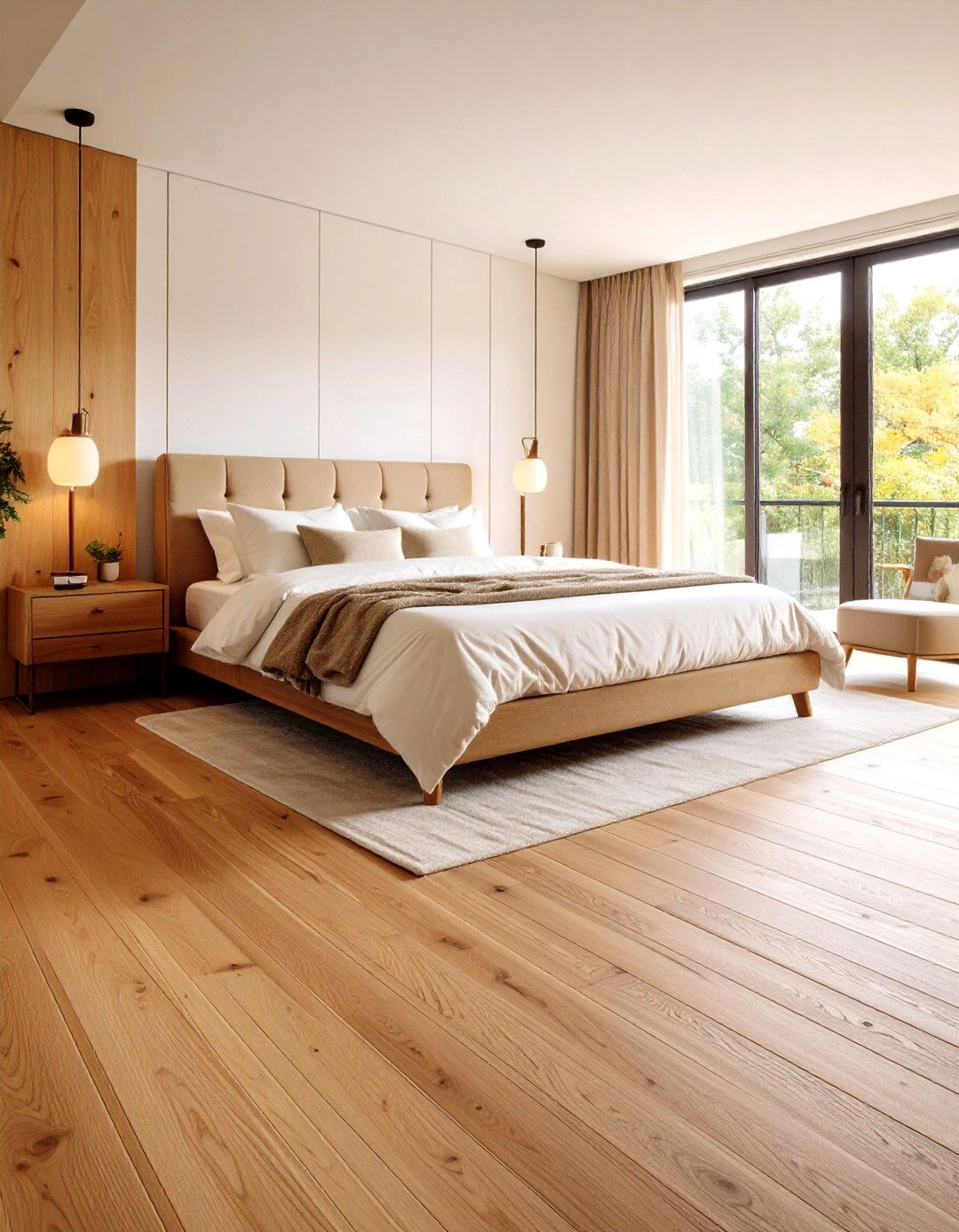
A well-loved classic, solid hardwood plank bedroom flooring brings instant warmth and resale appeal thanks to its natural grain and rich tones. Use wide planks to make a small room feel broader, then finish them with a low-VOC matte sealant to mute glare and hide scuffs. Hardwood can be sanded and refinished many times, letting you update stain colour as tastes change; just remember that wood moves with humidity, so leave expansion gaps and add a humidifier in dry seasons. Daily dust-mopping keeps allergens at bay, and felt pads under beds stop dents before they start.
2. Engineered Wood Bedroom Flooring for Everyday Stability
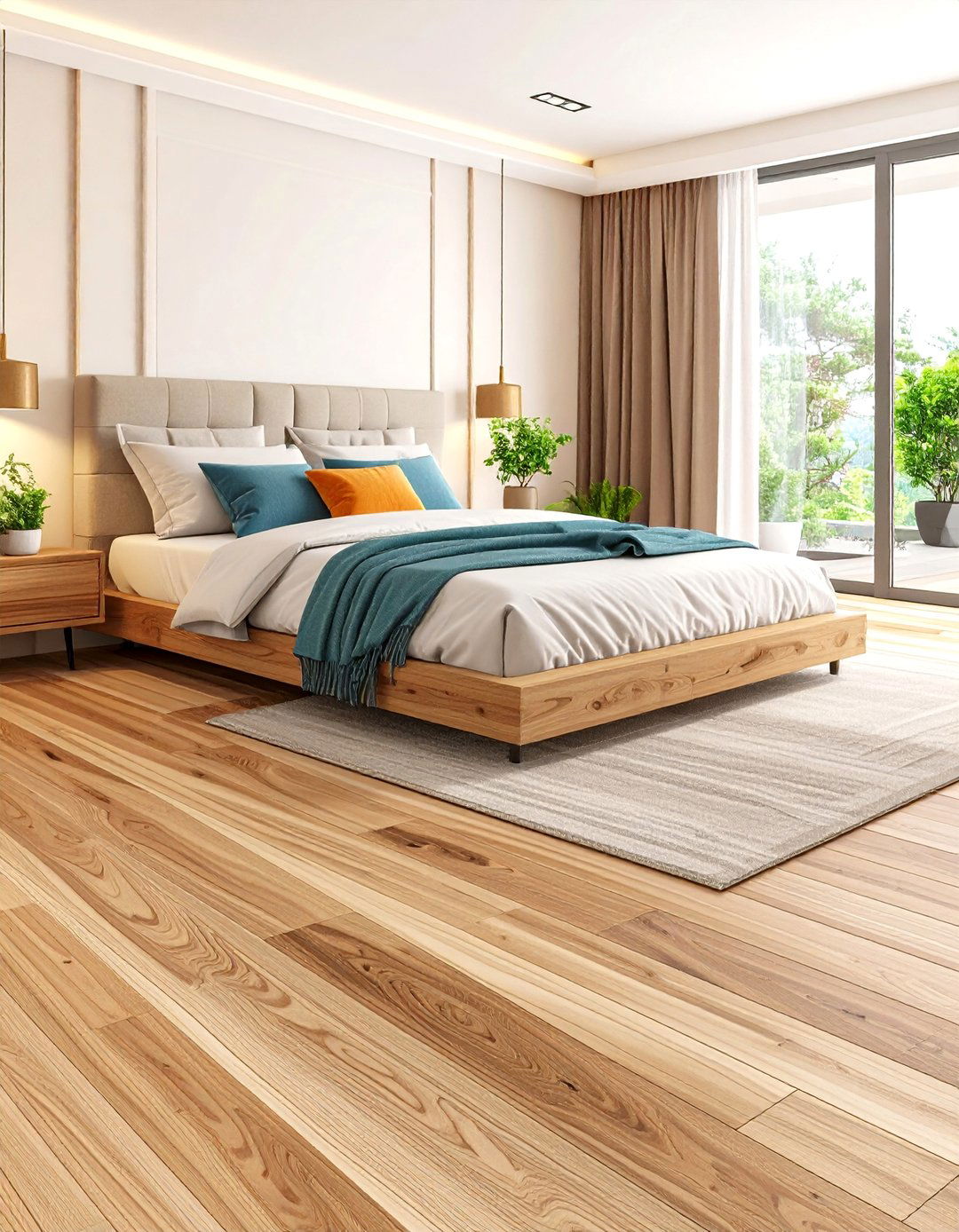
Unlike solid boards, engineered wood bedroom flooring layers a real timber veneer over a plywood core, reducing seasonal swelling and shrinking—ideal for rooms above humid spaces or in regions with big temperature swings. That stability means longer runs without transition strips and fewer squeaks under foot. Choose a product with a wear layer at least 3 mm thick so you can refinish once or twice; lower-profile planks are fine where traffic is light. Floating click systems speed DIY installs, while glue-down versions offer the solid feel purists crave for years to come.
3. Luxury Vinyl Plank Bedroom Flooring That Laughs at Spills
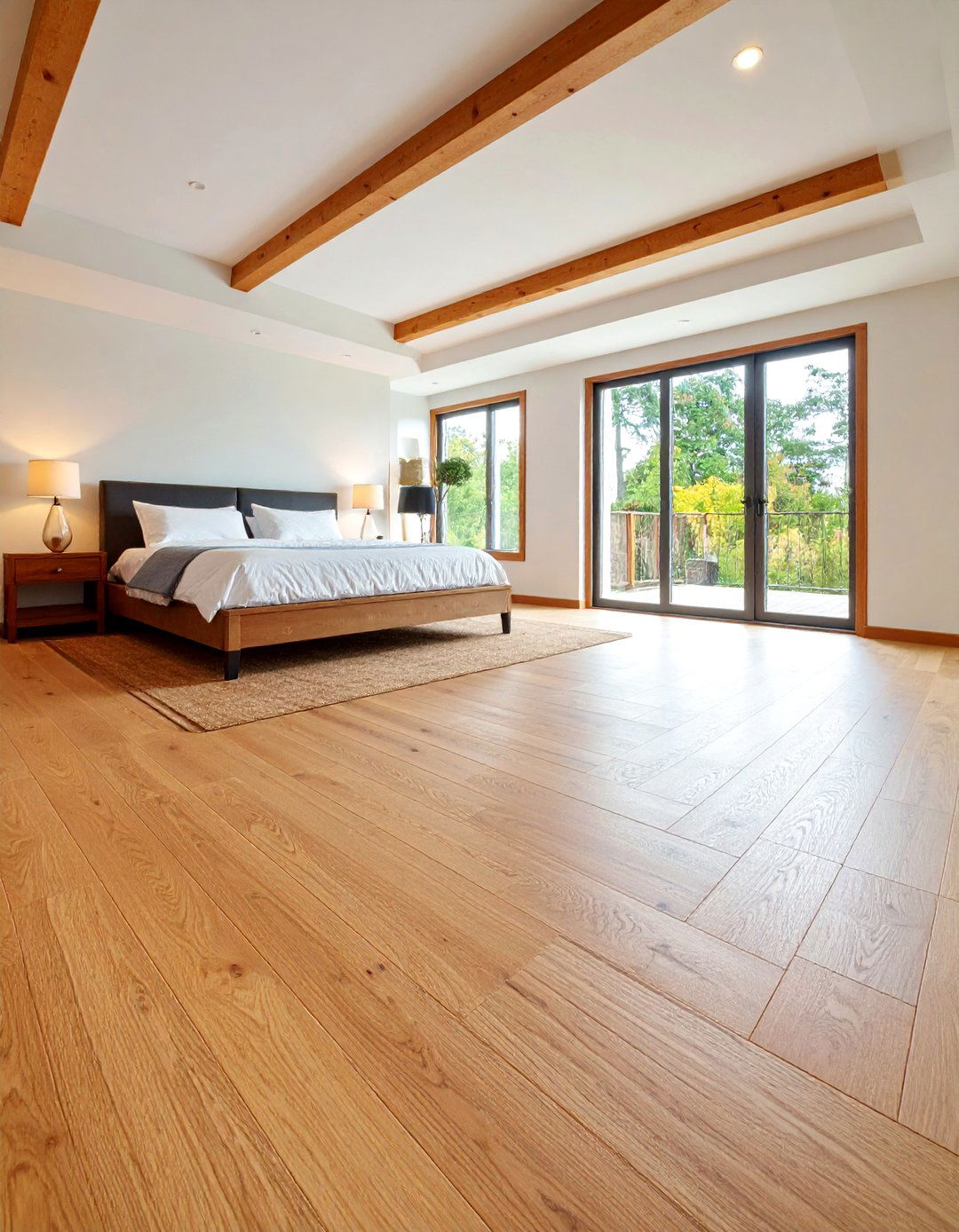
For households that crave a wood look but dread water rings from bedside carafes, luxury vinyl plank bedroom flooring delivers. Its PVC core is completely waterproof and the printed film layer now rivals real oak, even showing wire-brush textures. Attached cork or foam underlayment muffles footfall—a bonus in upstairs bedrooms. Planks click together with minimal tools, letting weekend warriors finish a room in hours. Stick to brands rated low for volatile organic compounds to keep indoor air fresh, and place breathable felt pads under dressers—LVP resists dents, but prevention ensures a flawless surface long-term.
4. Plush Wall-to-Wall Bedroom Flooring for Cloud-Like Comfort
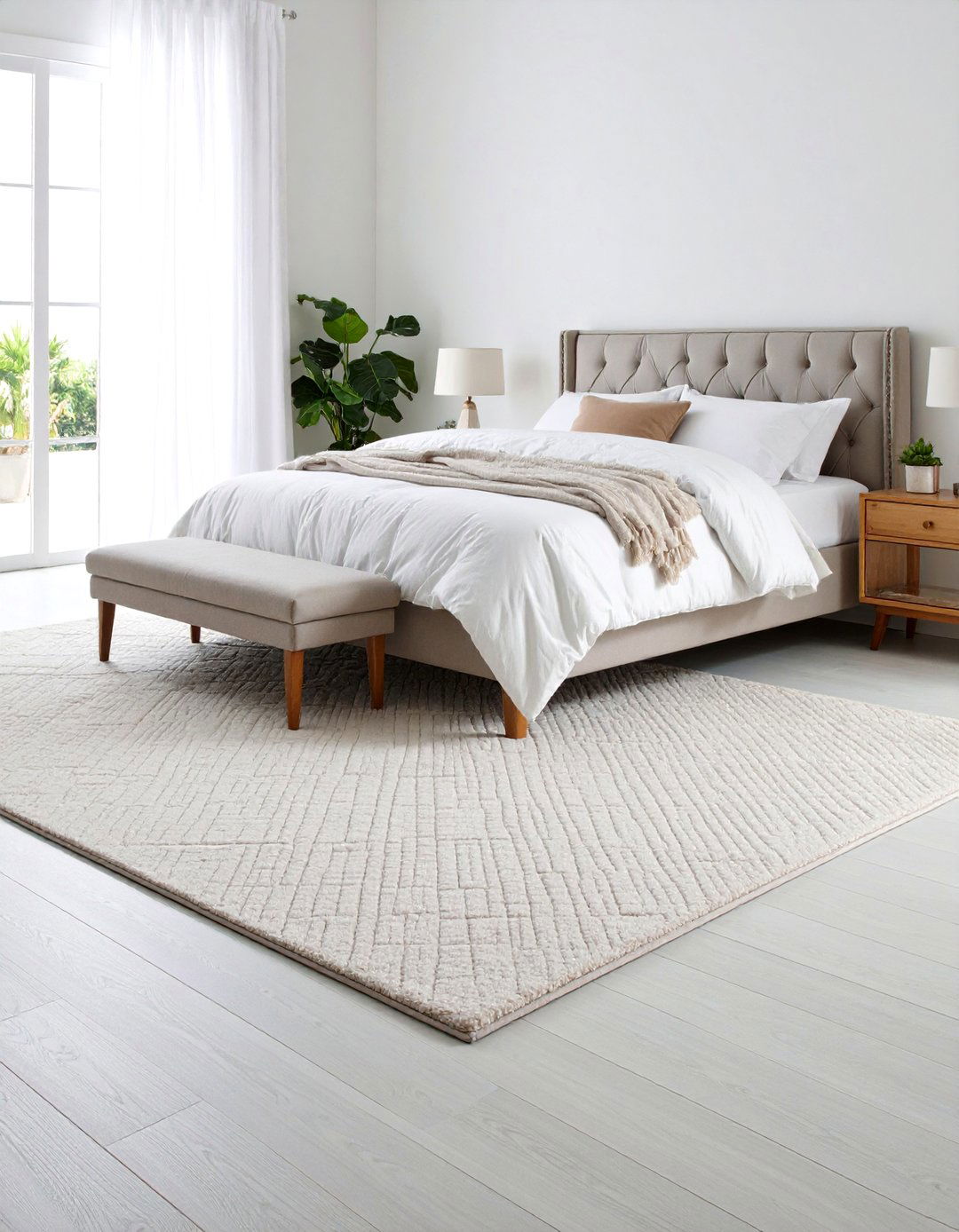
The modern resurgence of plush wall-to-wall bedroom flooring proves that comfort never goes out of style. Opt for high-pile, solution-dyed nylon or triexta fibers; both bounce back from furniture marks and resist staining far better than older acrylics. Installing an 8- to 10-pound memory-foam pad underneath adds luxury and quiet, making the space feel insulated from hallway noise. If allergies worry you, seek Green Label Plus carpets and vacuum weekly with a HEPA filter. Neutral greige tones pair with nearly any décor and let bedding steal the spotlight every night.
5. Geometric-Pattern Bedroom Flooring to Add Personality
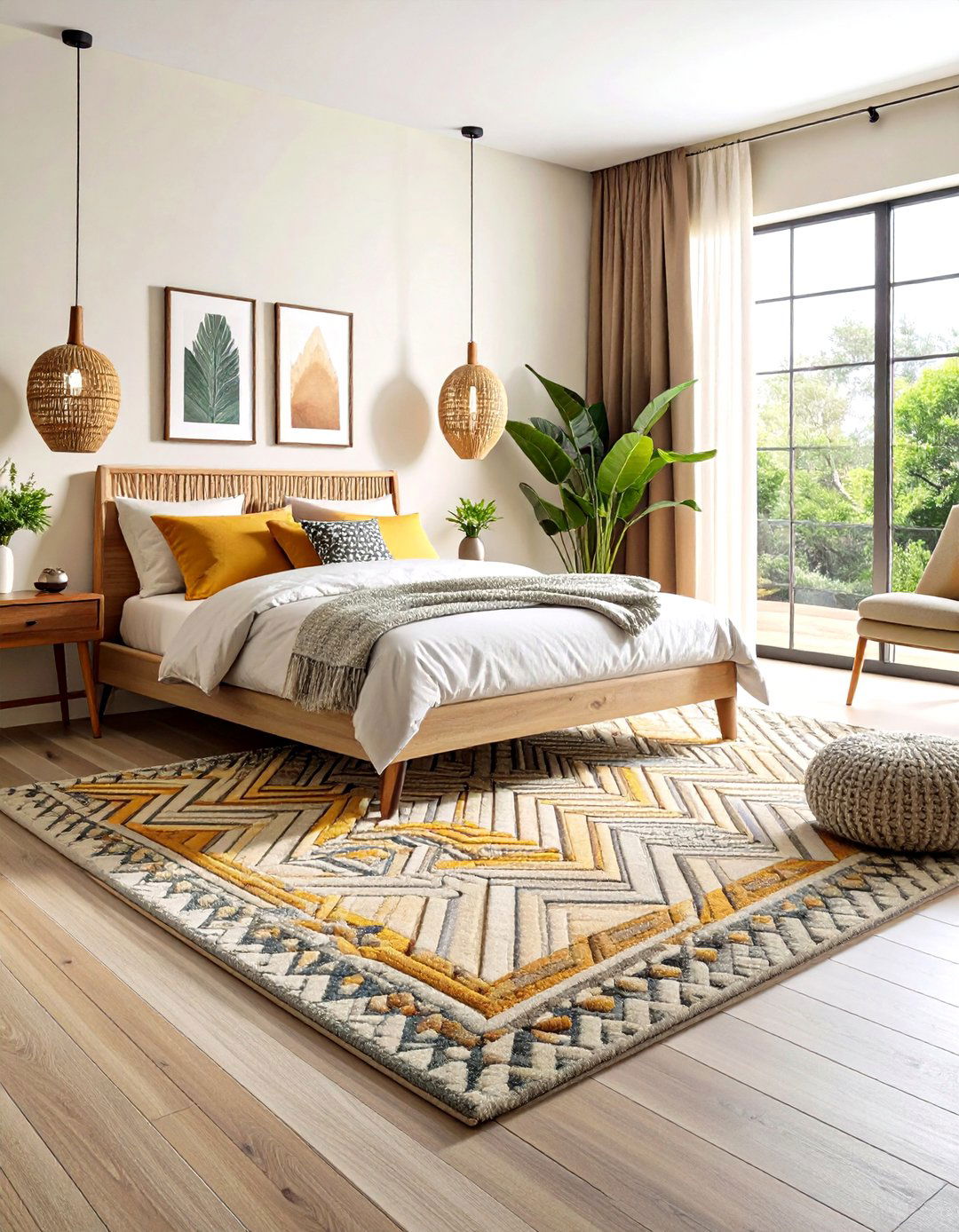
With bold lattice, chevron, or checkerboard motifs woven into low-pile carpet, geometric-pattern bedroom flooring turns the floor into the room’s statement art. Choose cut-and-loop constructions—the looped areas resist crushing under dressers, while cut tufts supply softness under toes. Patterns also disguise lint and pet hair, stretching time between vacuum sessions. Keep bedding and drapes simple so the motif can shine, and align seams carefully to maintain crisp visuals. If you worry about commitment, install the design as a large bound rug over hardwood; this lets you swap styles later without replacing the entire floor down the road.
6. Eco-Friendly Bamboo Bedroom Flooring for Sustainable Style
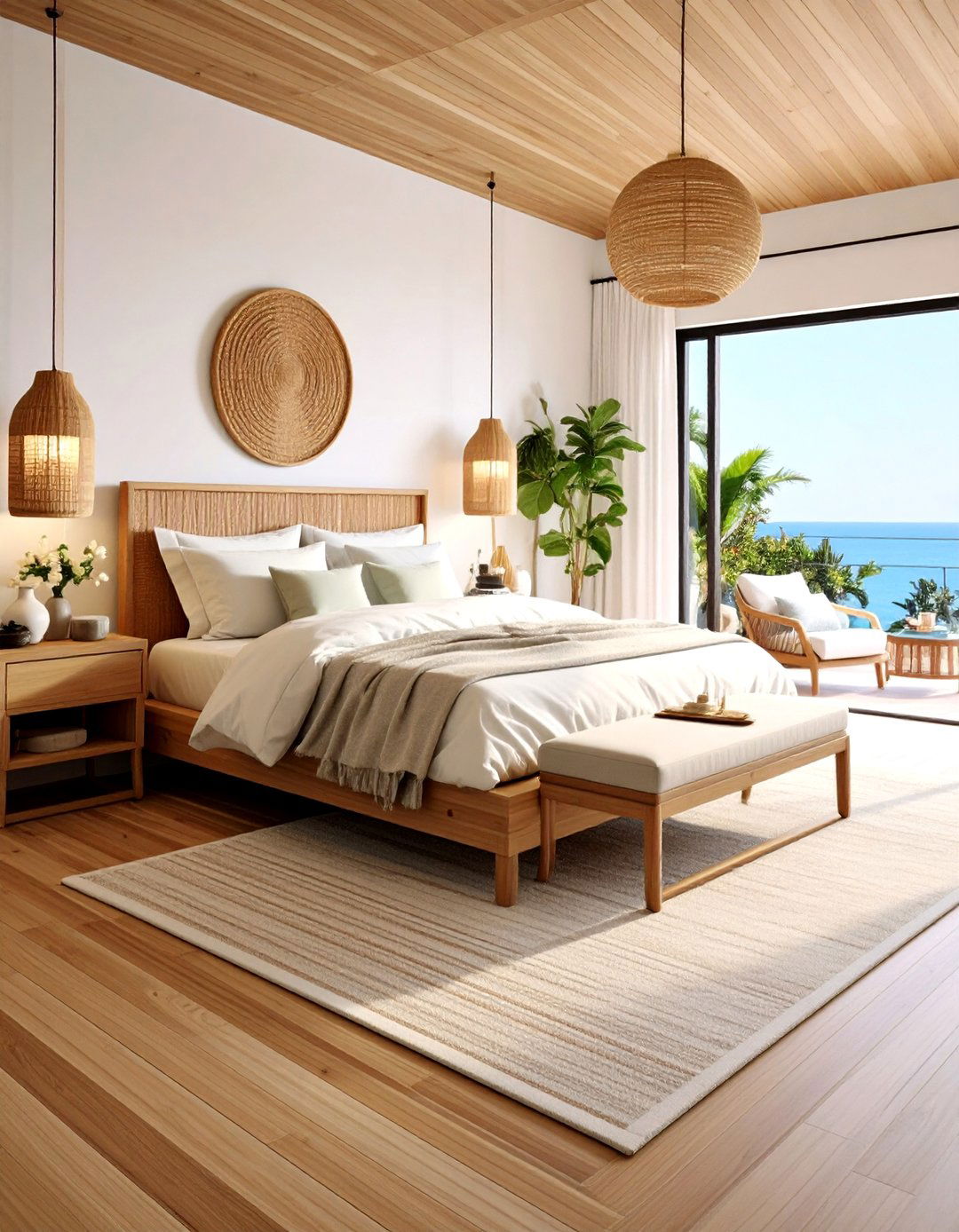
By harnessing one of the planet’s fastest-growing grasses, bamboo bedroom flooring delivers wood-like beauty with a lighter carbon footprint. Stranded-woven varieties are more than twice as hard as red oak, shrugging off dropped chargers and wheeled suitcases. Before buying, check for FloorScore or CARB-2 certification, which limits formaldehyde and keeps bedroom air healthy. If you like a modern vibe, pick a wide plank in a caramelized tone; for coastal calm, choose whitewashed bamboo. Damp-mop with a barely moist microfiber pad and skip oil soaps—they can dull the UV-cured finish before its time.
7. Soft Cork Bedroom Flooring for Whisper-Quiet Nights
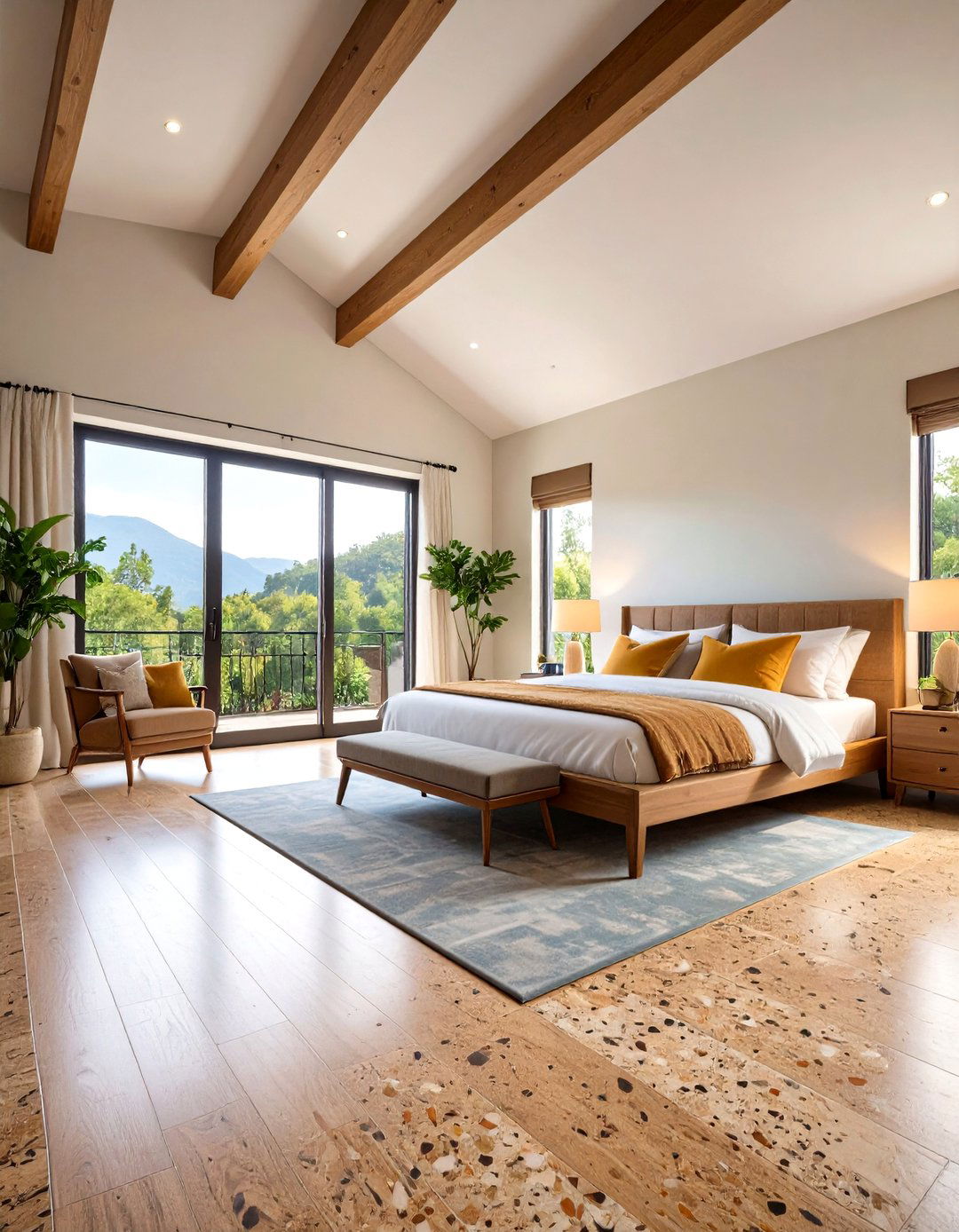
Consider cork bedroom flooring if you share walls or ceilings with light sleepers. Millions of air pockets inside the bark absorb impact and muffle footsteps, helping upstairs bedrooms stay tranquil. Cork feels springy underfoot, easing knee and back strain, and its natural suberin resists mold, insects, and pet dander. Apply a water-based polyurethane every few years to guard against heel dents and keep a door mat handy; grit is cork’s biggest enemy. Select click-lock tiles for easy DIY and mix stain colours for a marbled look.
8. Polished Concrete Bedroom Flooring with Industrial Chic
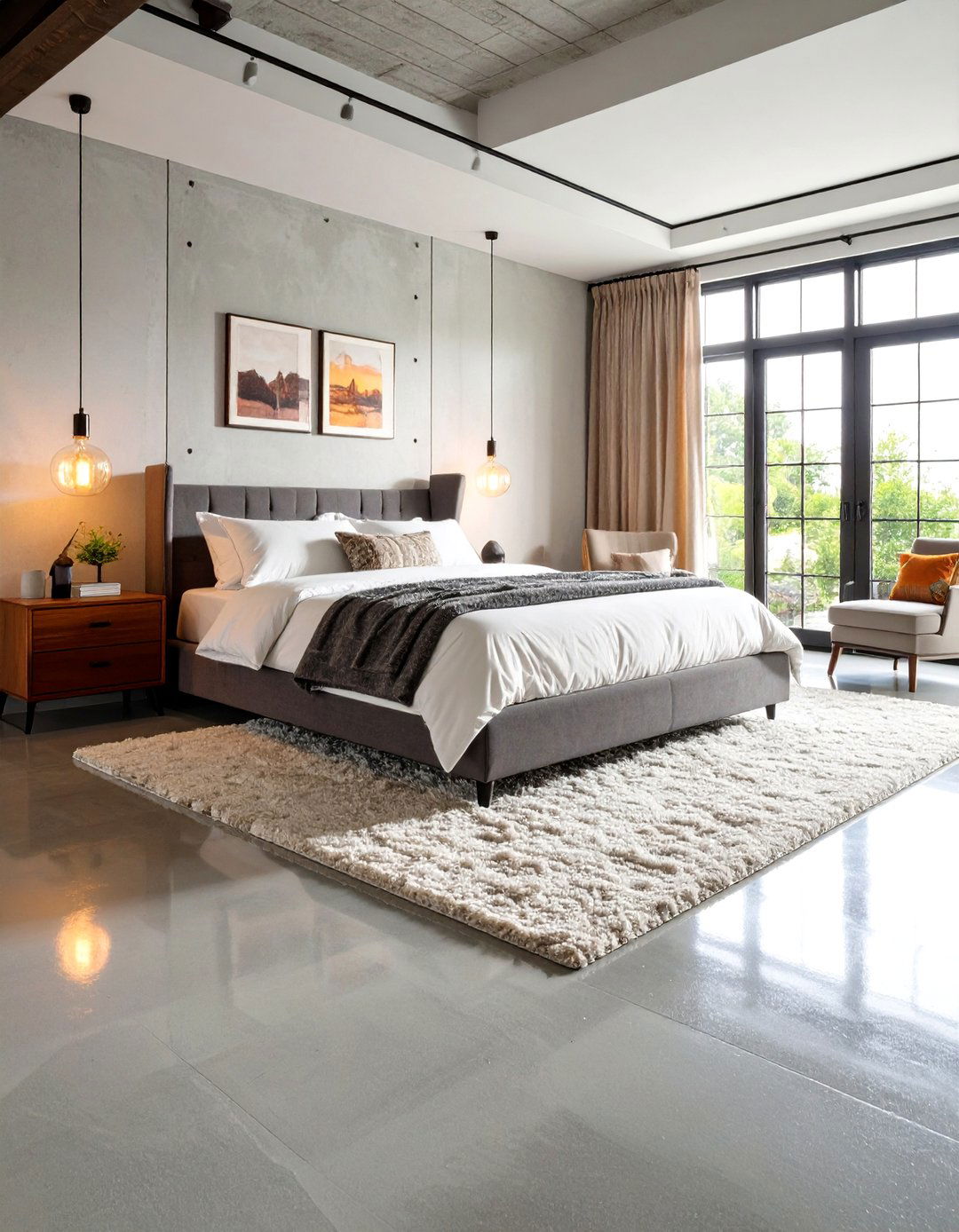
Looking for a minimalist canvas that stands up to teens’ rolling desks? Polished concrete bedroom flooring offers extreme durability and a mirror-like sheen that reflects natural light around the space. Its high thermal mass keeps rooms cooler in hot climates and pairs brilliantly with radiant heat when winters bite, though socks are still recommended for early risers. Adding a matte densifier reduces dusting, and a breathable penetrating sealer blocks stains without creating slippery buildup. Balance the hard surface by layering a plush area rug under the bed and draping linen curtains to soften acoustics for a hotel-worthy sleep every night.
9. Herringbone Parquet Bedroom Flooring for Subtle Drama
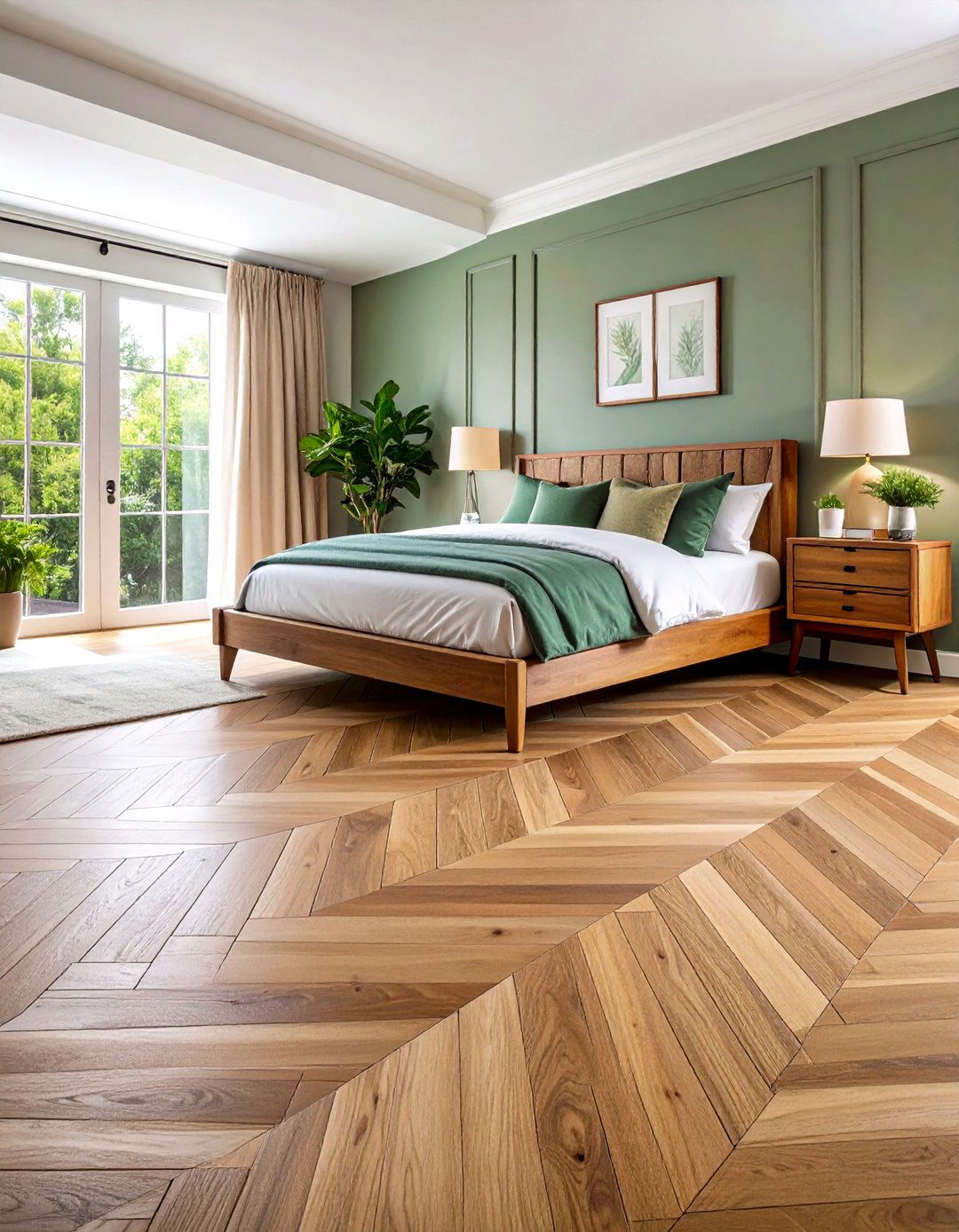
One way to elevate wood boards without overwhelming the eye is to lay herringbone parquet bedroom flooring. The zig-zag pattern draws attention to length and width at once, making compact rooms feel grander while guiding the gaze toward a feature wall or window. Use tongue-and-groove engineered panels backed with mesh to speed installation and keep pattern alignment tight. A natural oil finish highlights grain without the plastic shine of poly; re-oil high-traffic paths yearly for longevity. Pair with simple baseboards so the motif stays the star, and position rugs parallel to the chevrons every morning.
10. Reclaimed Wood Bedroom Flooring Loaded with History

As boards salvaged from barns, factories, and riverbeds find new life, reclaimed wood bedroom flooring offers knots, nail holes, and weathered tones no factory distressing can replicate. Choosing FSC-certified suppliers ensures planks are kiln-dried to kill insects and prevent warping while proving they were ethically sourced. Wider widths highlight patina, but ask the mill to tongue-and-groove edges so installation mirrors modern hardwood. Because reclaimed boards vary in thickness, request pre-planing or budget time for on-site sanding. Finish with a clear penetrating oil to showcase every scar and preserve the material’s storied character beautifully.
11. Radiant-Heated Bedroom Flooring for Year-Round Cosiness
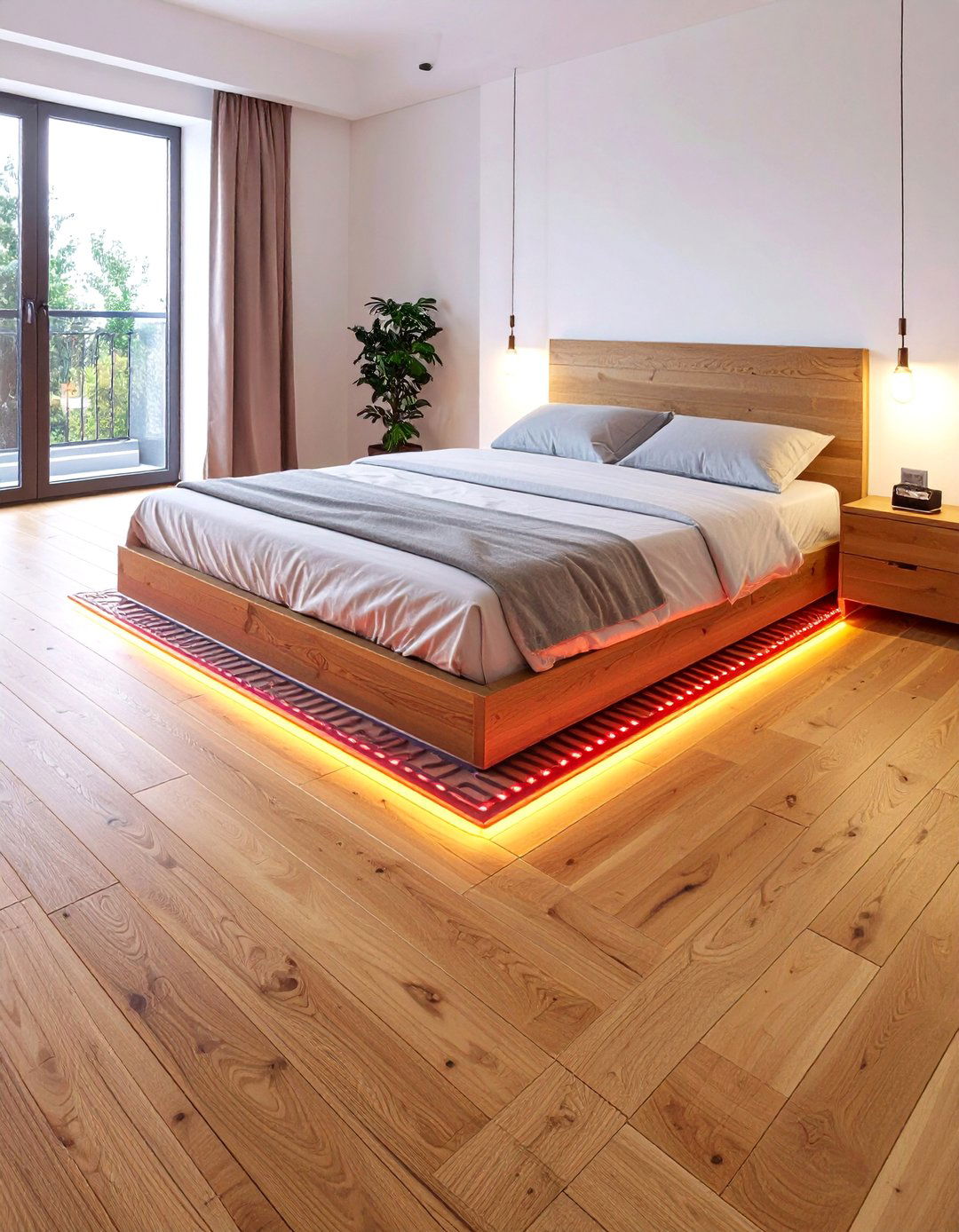
When toes despise cold dawns, radiant-heated bedroom flooring turns the entire surface into a gentle panel radiator. Electric mats are easiest for remodels; hydronic tubing costs more up front but runs cheaper long-term when linked to a high-efficiency boiler. Programmable thermostats create zones so you can nudge bedroom warmth before your alarm, then drop it during the day to save energy. Pair the system with thin engineered wood, stone-look tile, or polished concrete—dense materials hold heat longer than carpet. Always verify chosen planks are rated for radiant use to avoid adhesive failures over many comfortable winter seasons.
12. Terrazzo Bedroom Flooring for Sparkle and Strength
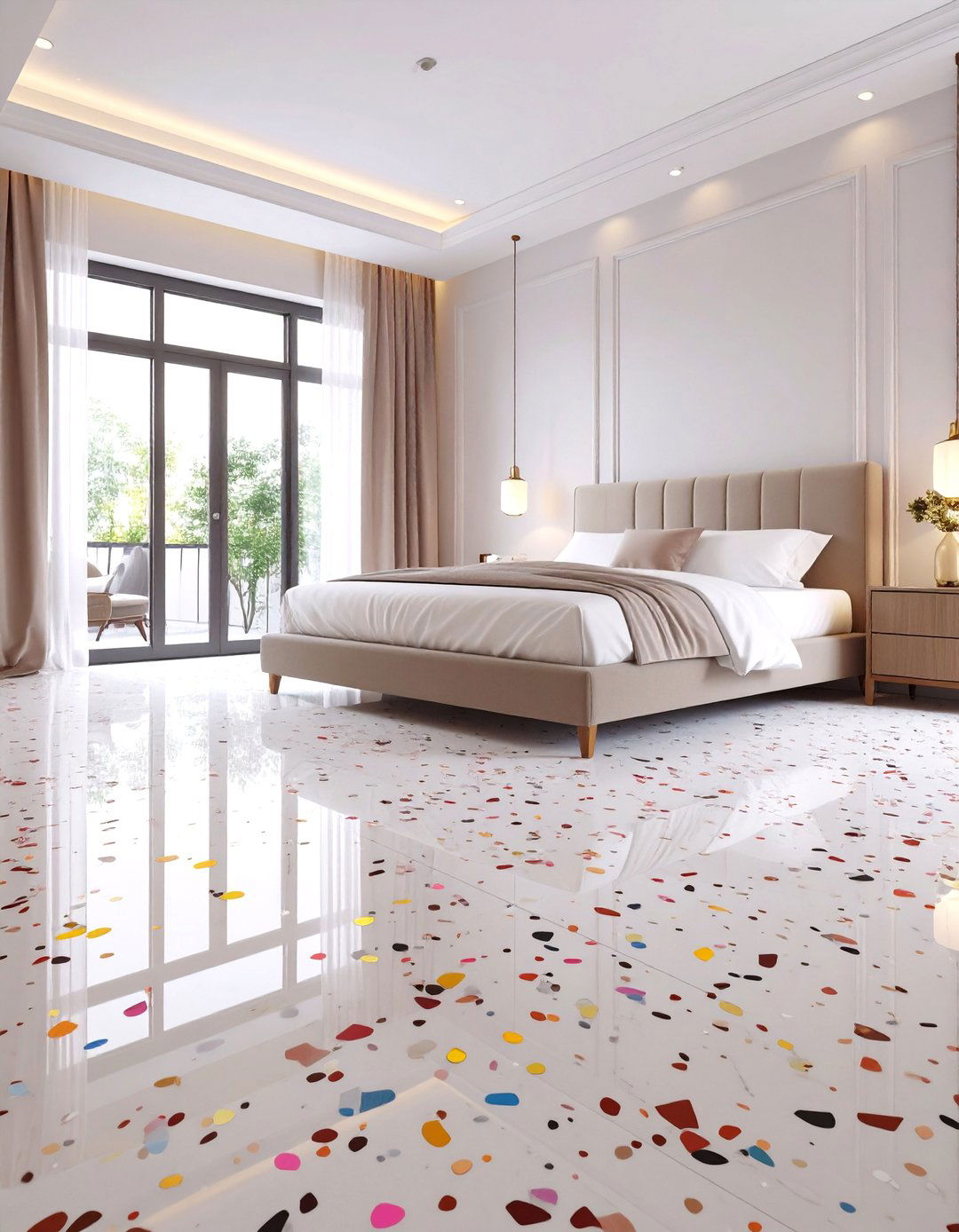
Certainly not just for mid-century lobbies, modern terrazzo bedroom flooring mixes marble, glass, or metal chips into a cement or epoxy base tinted any shade you fancy. Once polished, the seamless slab resists water, stains, and scratches far better than most stone while bouncing light like confetti. Because installation involves on-site pouring, hire an experienced crew and request low-VOC epoxy to limit fumes. Plan expansion joints near doorways to handle minor movement, and budget occasional resealing to keep the shine. With proper care, terrazzo can outlast several mattress cycles without losing its playful personality.
13. Waterproof Laminate Bedroom Flooring for Busy Homes
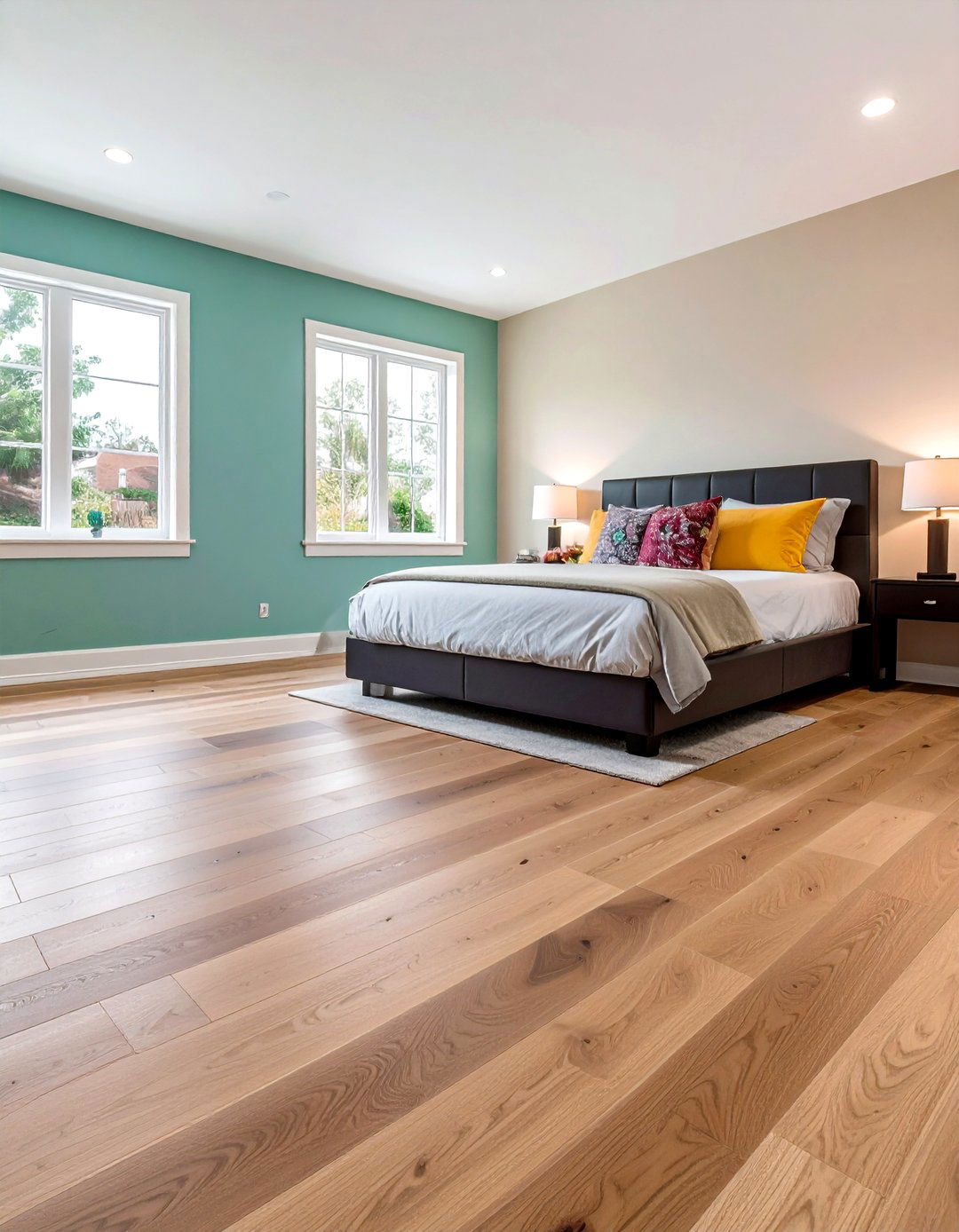
Another budget-friendly contender, waterproof laminate bedroom flooring combines a wood-fiber core with a tight-sealing surface so stray tea cups and pet accidents won’t swell the planks. Newer melamine tops mimic wire-brushed oak with convincing texture, and click joints are now coated with hydrophobic wax to lock out moisture. Because laminate is harder than vinyl, use a felt-backed underlayment to soften echo. Check the AC rating: 4 or 5 handles wheeled office chairs in study-bedrooms. Sweep with a dry microfiber and spot-clean only; steam mops can force water through seams and void warranties in the future.
14. Large-Format Porcelain Tile Bedroom Flooring for Seamless Stone Looks
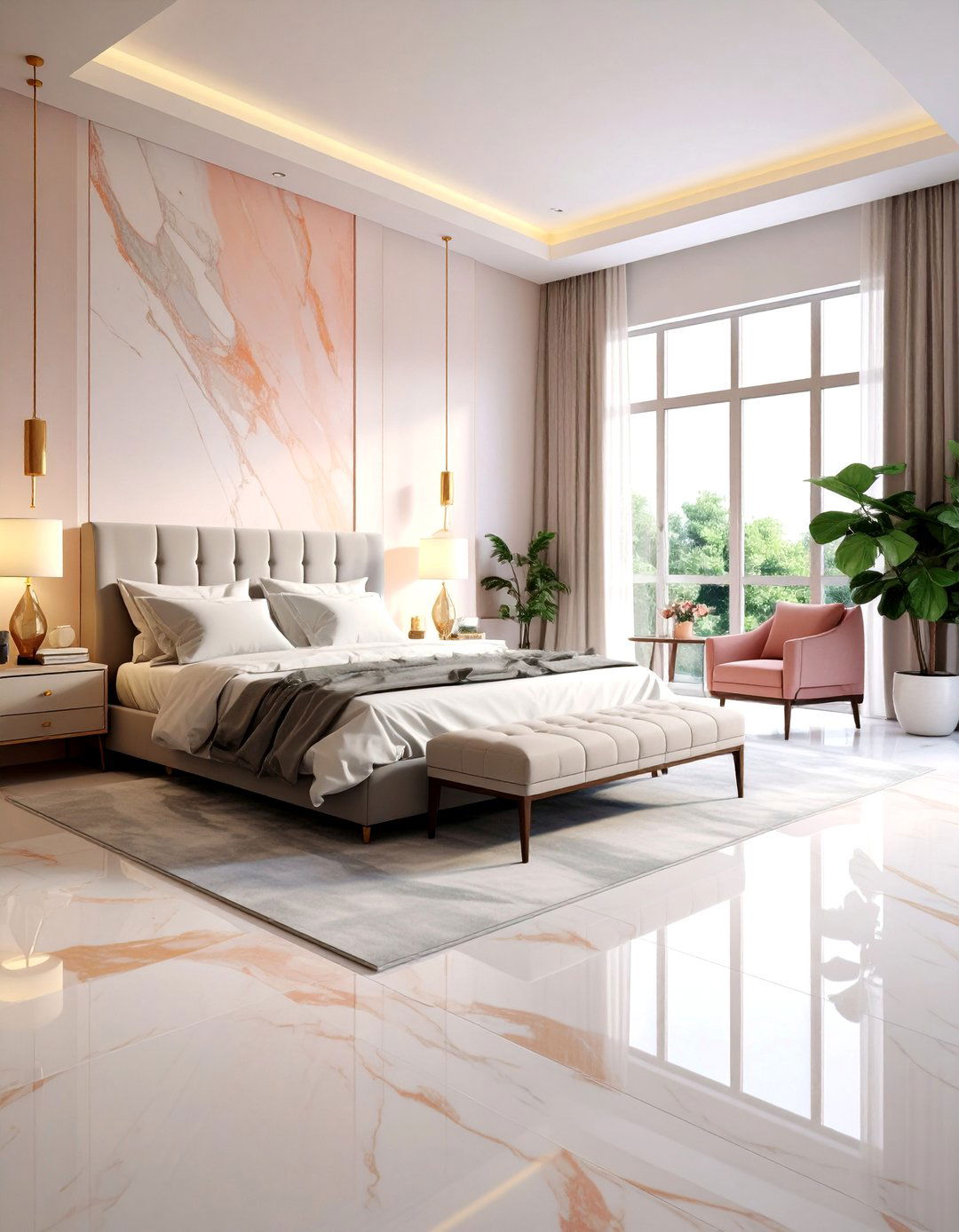
Despite its bathroom roots, large-format porcelain tile bedroom flooring creates an elegant, nearly grout-free field that resembles slab marble or slate yet costs far less. Tiles over 24 inches mean fewer joints to trap dust and simplify sweeping, and the dense porcelain body is practically waterproof and scratch-resistant. Pair it with a decoupling membrane to avoid cracks on upper floors and choose a matte slip-resistant finish for safety. Because tile can feel cool, lay an electric radiant mat beneath or add a shag rug beside the bed. Clean with pH-neutral soap—acidic cleaners can etch the printed glaze over the years.
15. Painted Plywood Bedroom Flooring for DIY Budgets
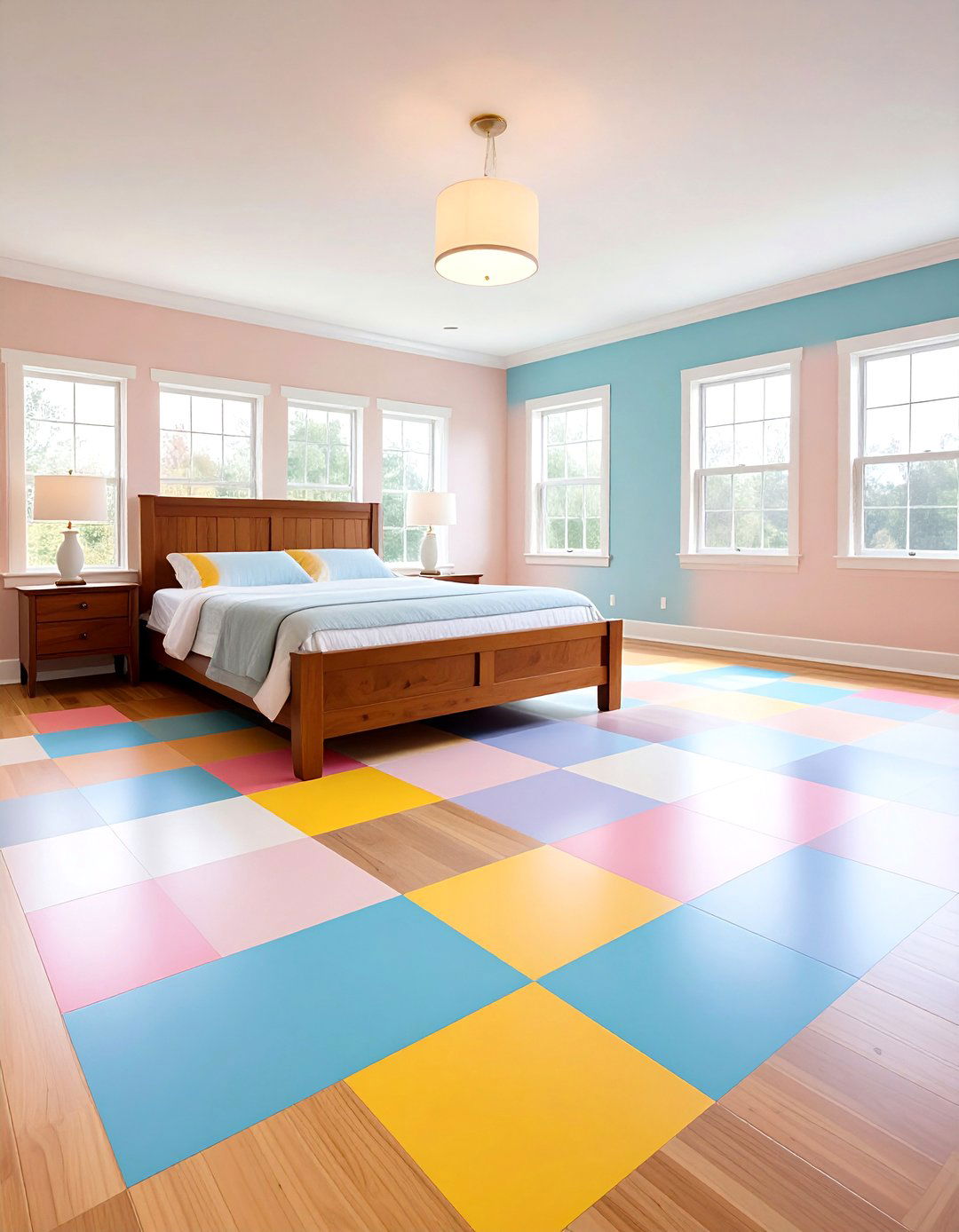
Take the sheathing already covering your joists and turn it into painted plywood bedroom flooring—a weekend project that can tide you over until the dream remodel. After filling seams with wood putty and sanding smooth, roll on a high-adhesion primer followed by two coats of porch-and-floor enamel; seal with a clear water-based polyurethane for scuff resistance. Stencils let you mimic encaustic tile, checkerboard, or faux rugs without buying material. Keep furniture on soft pads because plywood dents more easily than hardwood, and plan to recoat high-traffic areas every few years. Cost per square foot often beats bargain vinyl.
16. Natural-Fiber Sisal Bedroom Flooring for Organic Texture
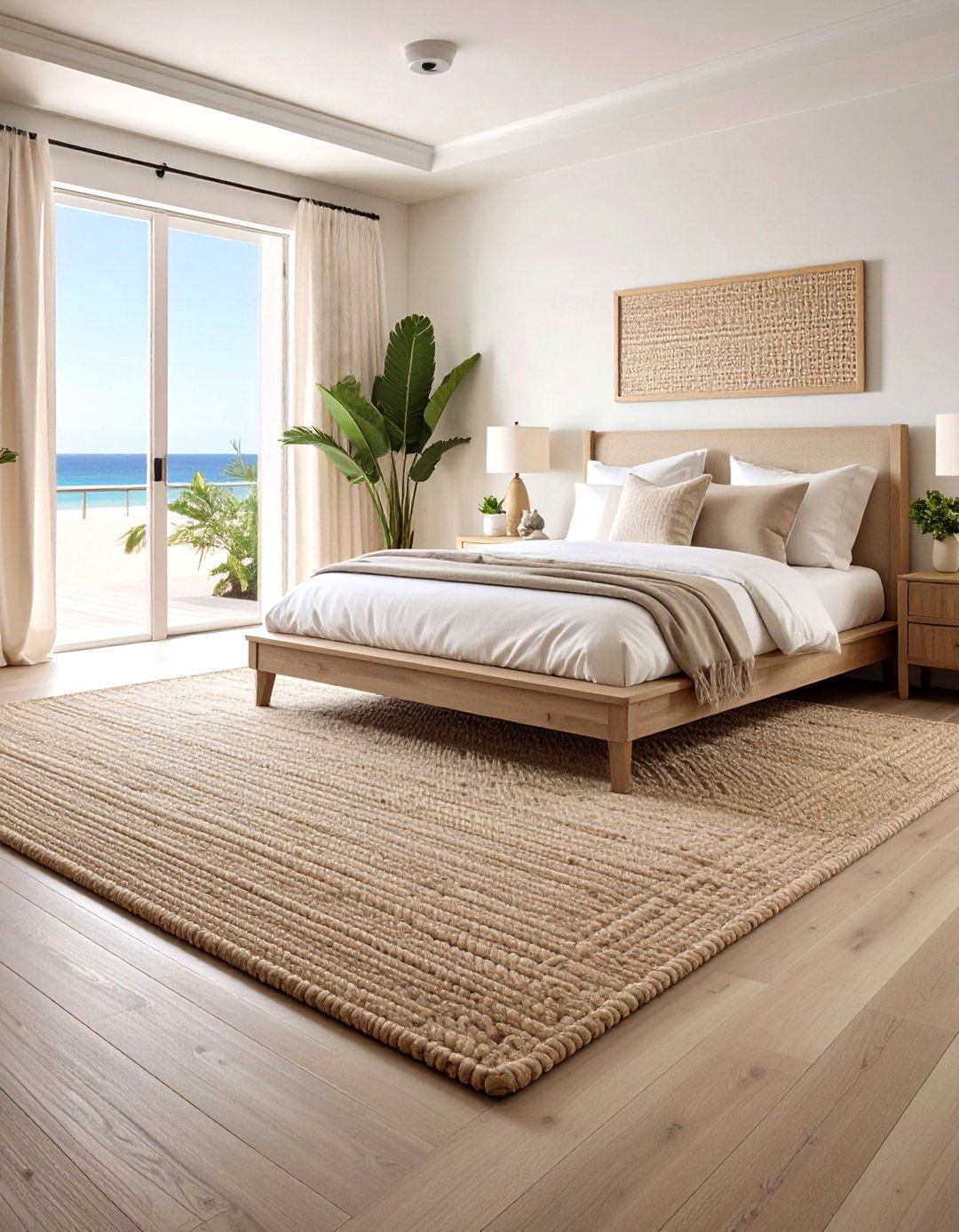
Owing to its rope-like texture, sisal bedroom flooring injects instant beach-house vibes while adding subtle grip underfoot. Woven from agave leaves, the fibers are biodegradable and renewable, pleasing eco-minded sleepers. Order a 6-inch sample first; some find coarse weaves prickly, and lighter colours can show spills. For longevity, specify a bound area rug rather than permanent broadloom so you can flip or replace panels if stains set in. Vacuum with a brushless head to avoid fuzzing and blot mishaps swiftly—sisal dislikes excess water and responds best to dry carpet powder between scheduled deep-cleaning sessions too.
17. Rubber Bedroom Flooring for Shock-Absorbing Safety
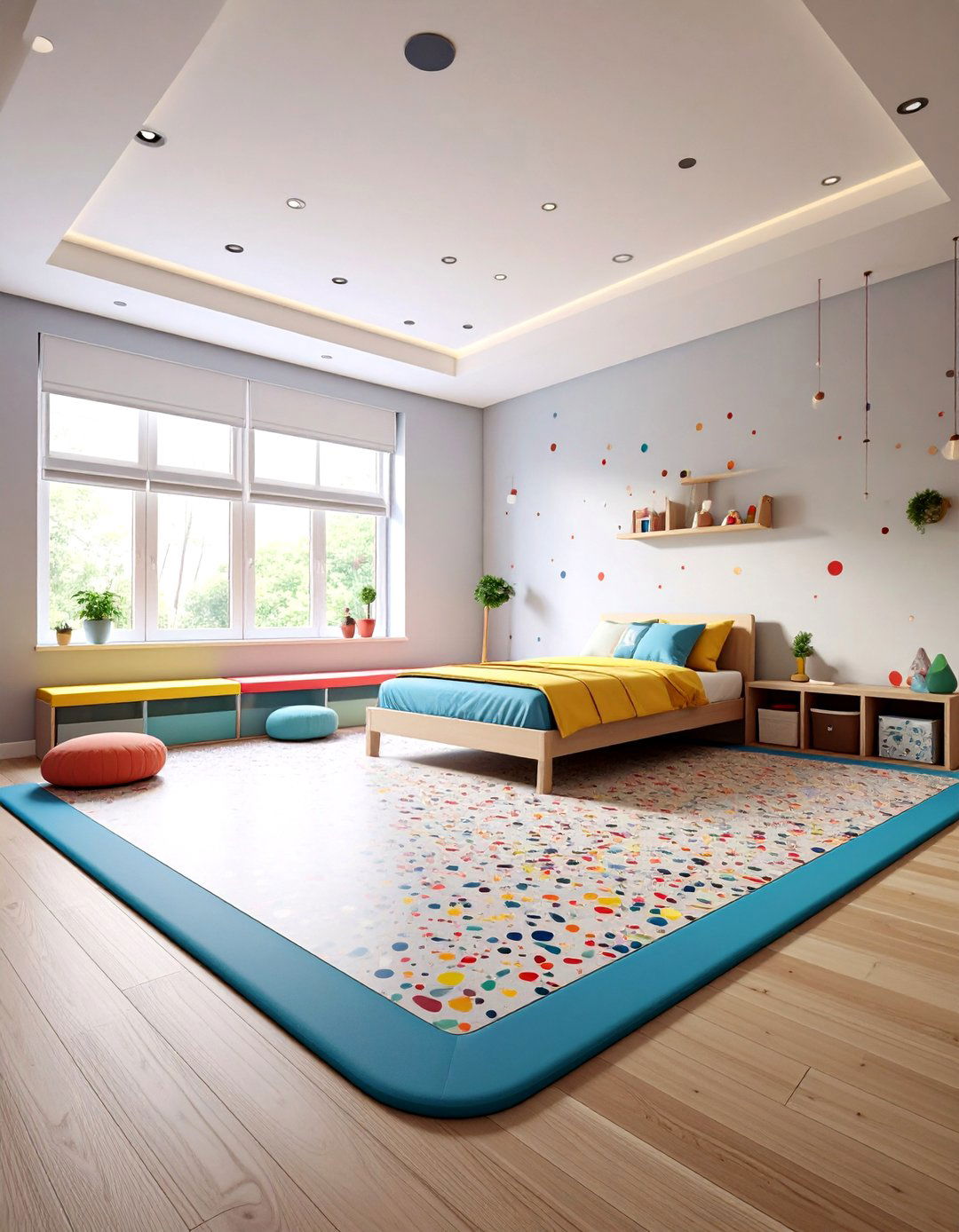
What began in gyms now finds a home in kids’ suites and multipurpose guest rooms: rubber bedroom flooring. The dense yet cushy material cushions falls, offers excellent slip resistance even when damp, and absorbs sound better than many hard surfaces—handy for late-night workouts or gaming setups. Recycled-content rolls come speckled in dozens of colours, letting you echo accent pillows or create playful borders. Because rubber can off-gas initially, choose products certified under FloorScore indoor-air standards and unroll them in a ventilated garage a day before install. Clean with a neutral-pH cleaner; harsh chemicals can dry the surface over time.
18. Wood-Plastic Composite Bedroom Flooring for All-Terrain Resilience
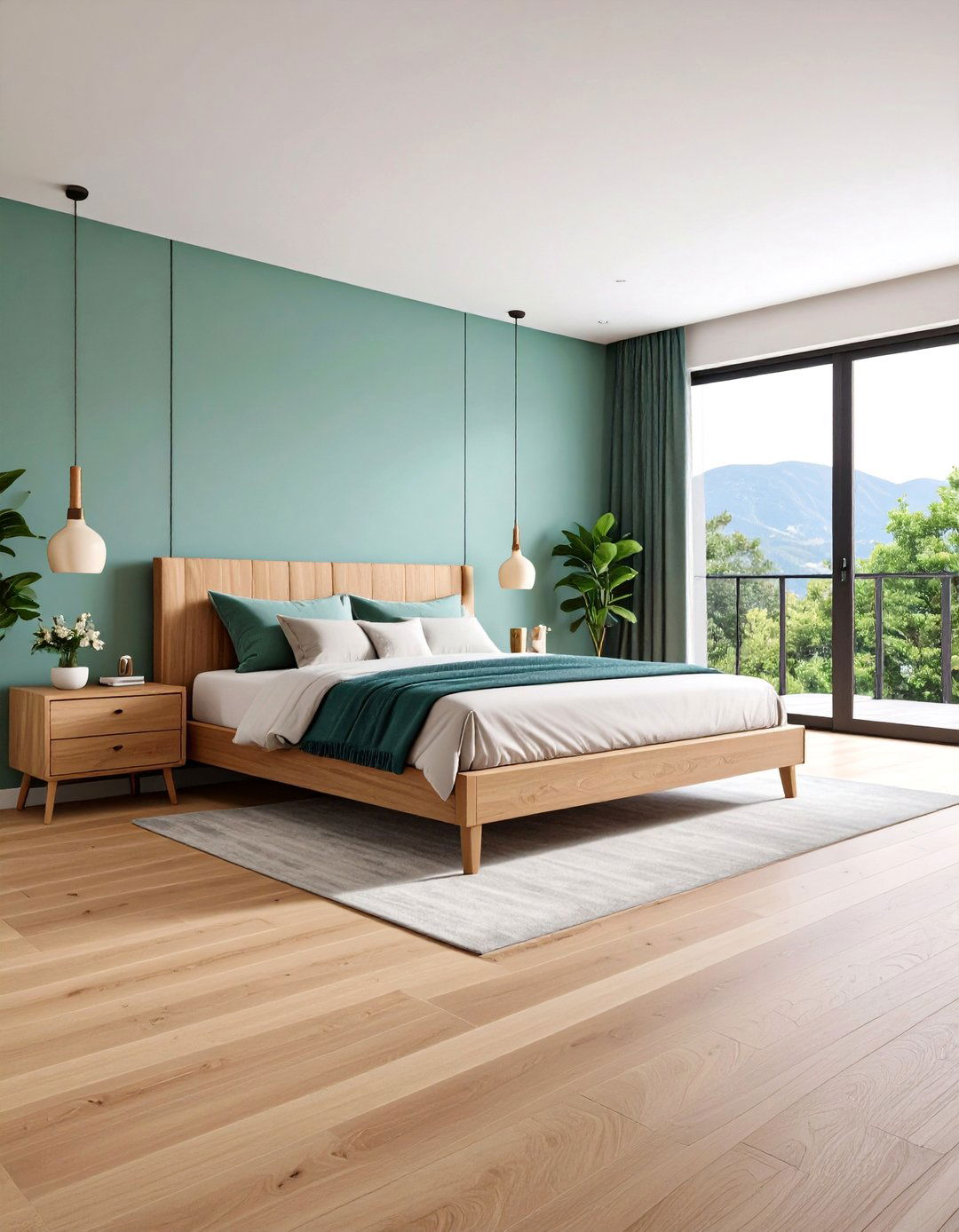
However active your household gets, wood-plastic composite bedroom flooring shrugs off scratches, pet claws, and humidity swings thanks to its rigid core and thick wear layer. Boards click together like LVP but feel slightly warmer and softer underfoot, making dawn alarms kinder. Because WPC is fully waterproof, you can run it seamlessly into adjacent ensuites without transitions, simplifying cleaning routines. Look for a wear layer of at least 0.5 mm if desks roll across the floor daily, and choose beveled edges to mimic hardwood. Routine care is simple: vacuum on hard-floor mode and damp-mop with mild soap.
19. Whitewashed Bedroom Flooring for Breezy Coastal Vibes
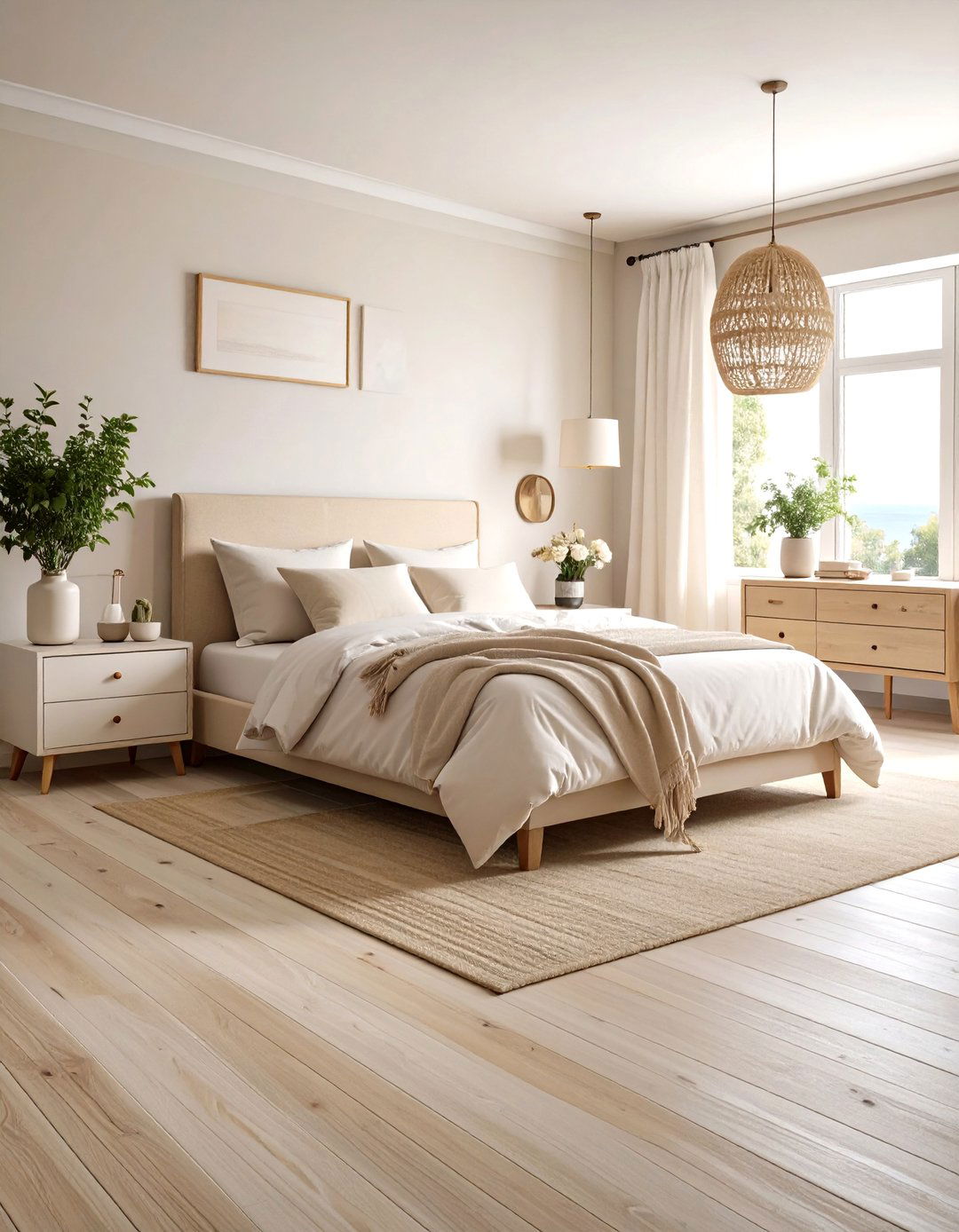
Additionally, whitewashed bedroom flooring bounces daylight around the room, making even north-facing spaces feel open and airy. Achieve the look by applying a diluted latex paint or commercial pickling stain over sanded pine or oak, then sealing with a matte polyurethane to protect the pale tone. The finish pairs perfectly with rattan accents and light linen bedding, yet it’s neutral enough for seasonal décor swaps. Sweep often—dust shows faster on light floors—and add sisal runners in traffic lanes to prevent wear. If boards yellow, a quick screen-and-recoat restores that beach-morning freshness for many sun-filled years ahead too.
20. Luxury Carpet-Tile Bedroom Flooring for Mix-and-Match Style

Finally, luxury carpet-tile bedroom flooring lets you play designer without ripping out an entire room if spills strike. Peel-and-stick or click-lock squares come in coordinated colour families, so you can lay a neutral field and drop in accent tiles as headboard art. If one tile stains, pop it up and wash or replace—perfect for children’s rooms and Airbnb suites. Many collections now include waterproof backings that block subfloor moisture, and some even boast recycled fishing-net fibers for sustainability. Keep spare tiles under the bed for quick swaps, and rotate high-traffic pieces annually to balance wear and color fading.
Conclusion:
Whichever bedroom flooring you favor—timeless hardwood, resilient vinyl, or whisper-soft cork—the secret is matching each material’s strengths to your daily routine. Durability specs such as AC ratings or wear-layer thickness matter, but so do tactile pleasures like warmth underfoot and the hush of cork. Armed with the ideas above, you can step into showrooms or DIY aisles ready to ask the right questions and choose a bedroom floor that supports restful sleep, reflects your style, and stands strong for years to come.


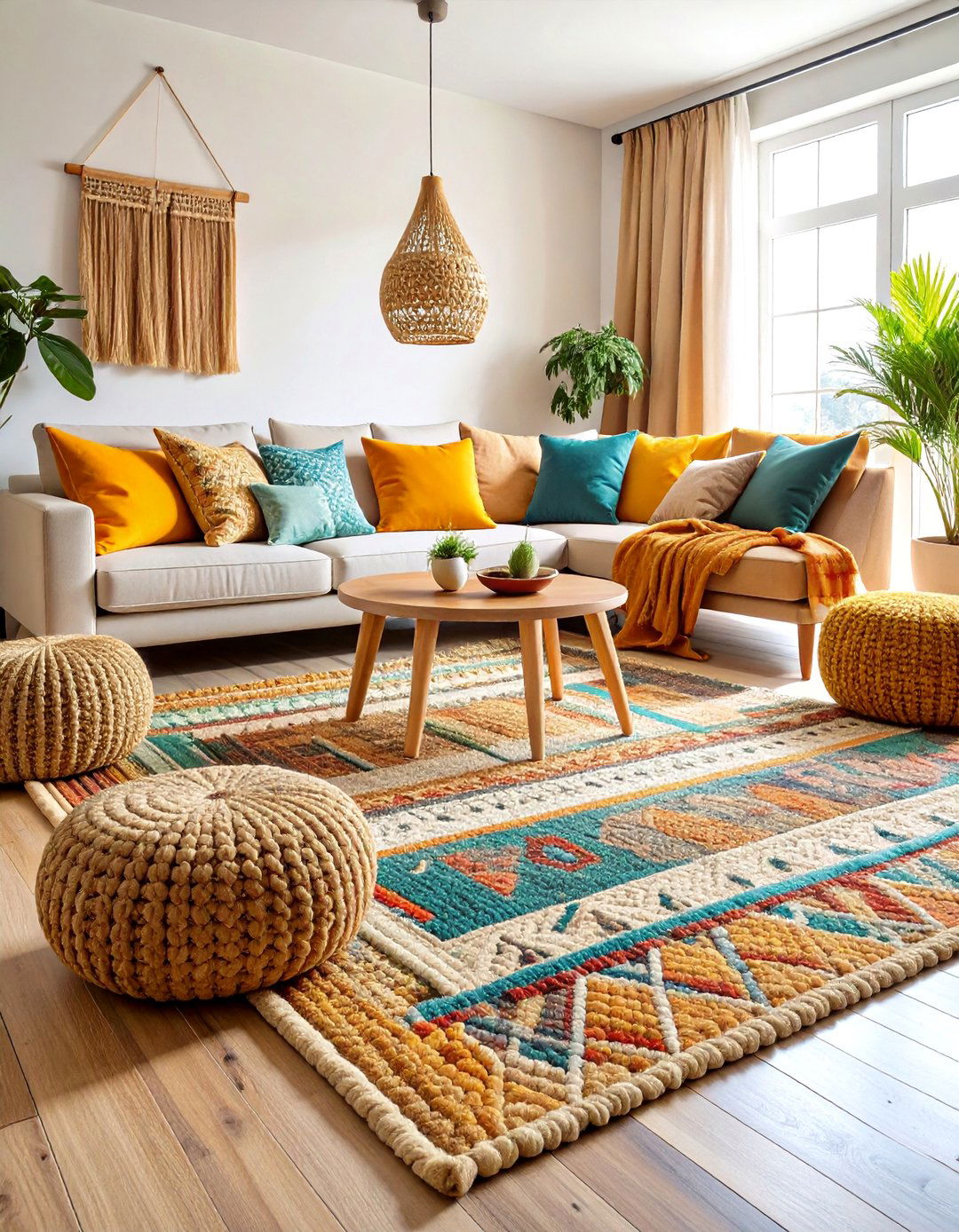
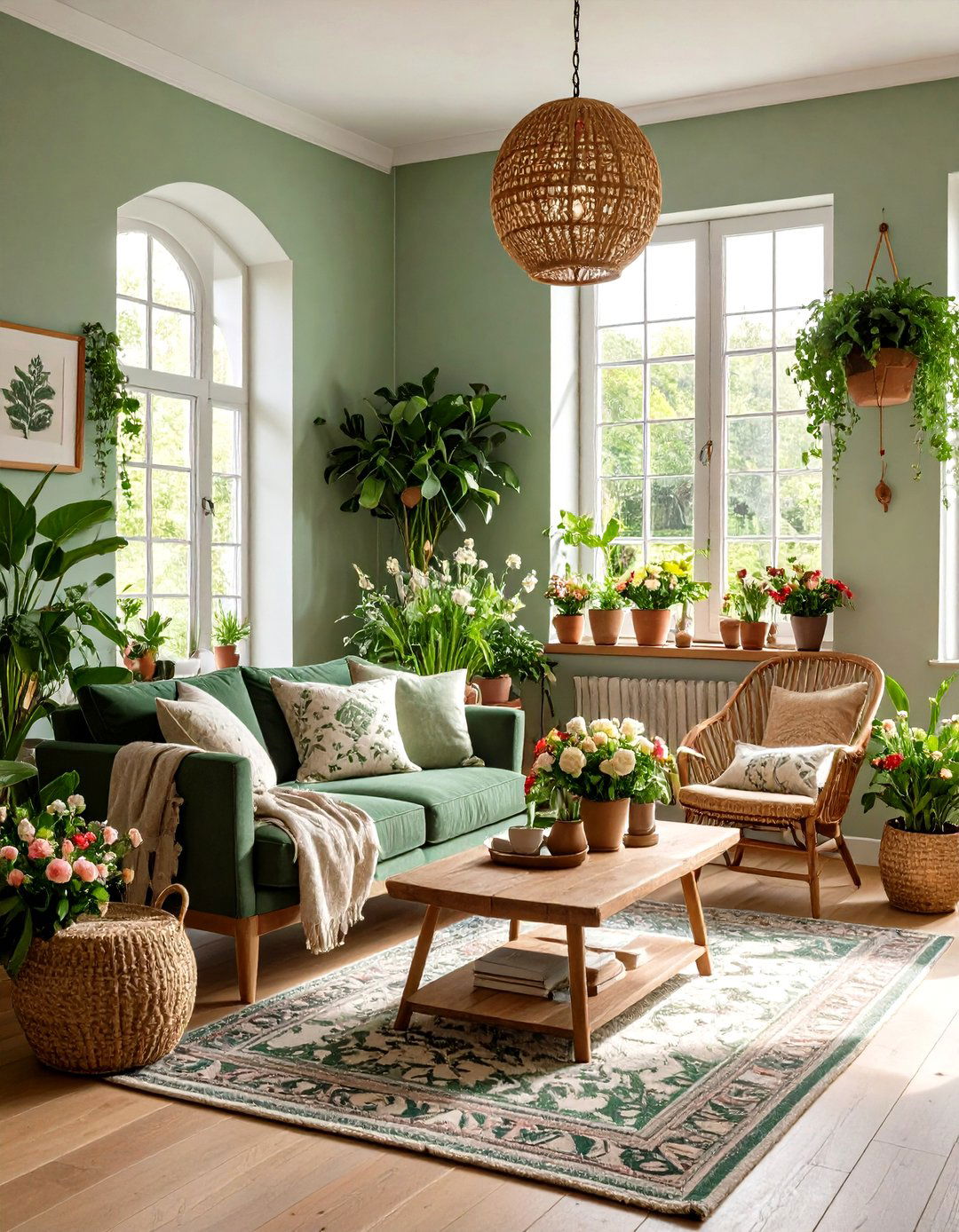
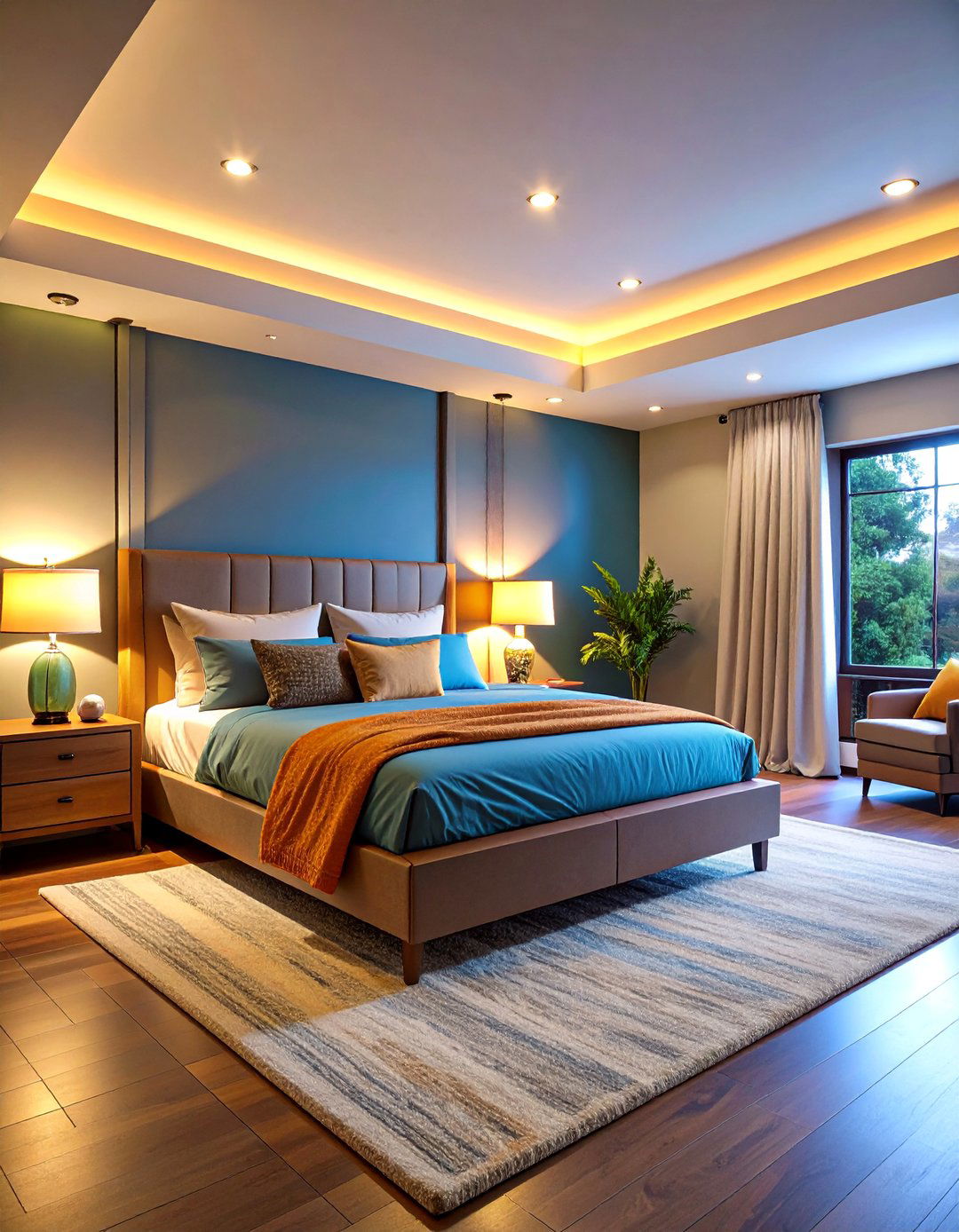

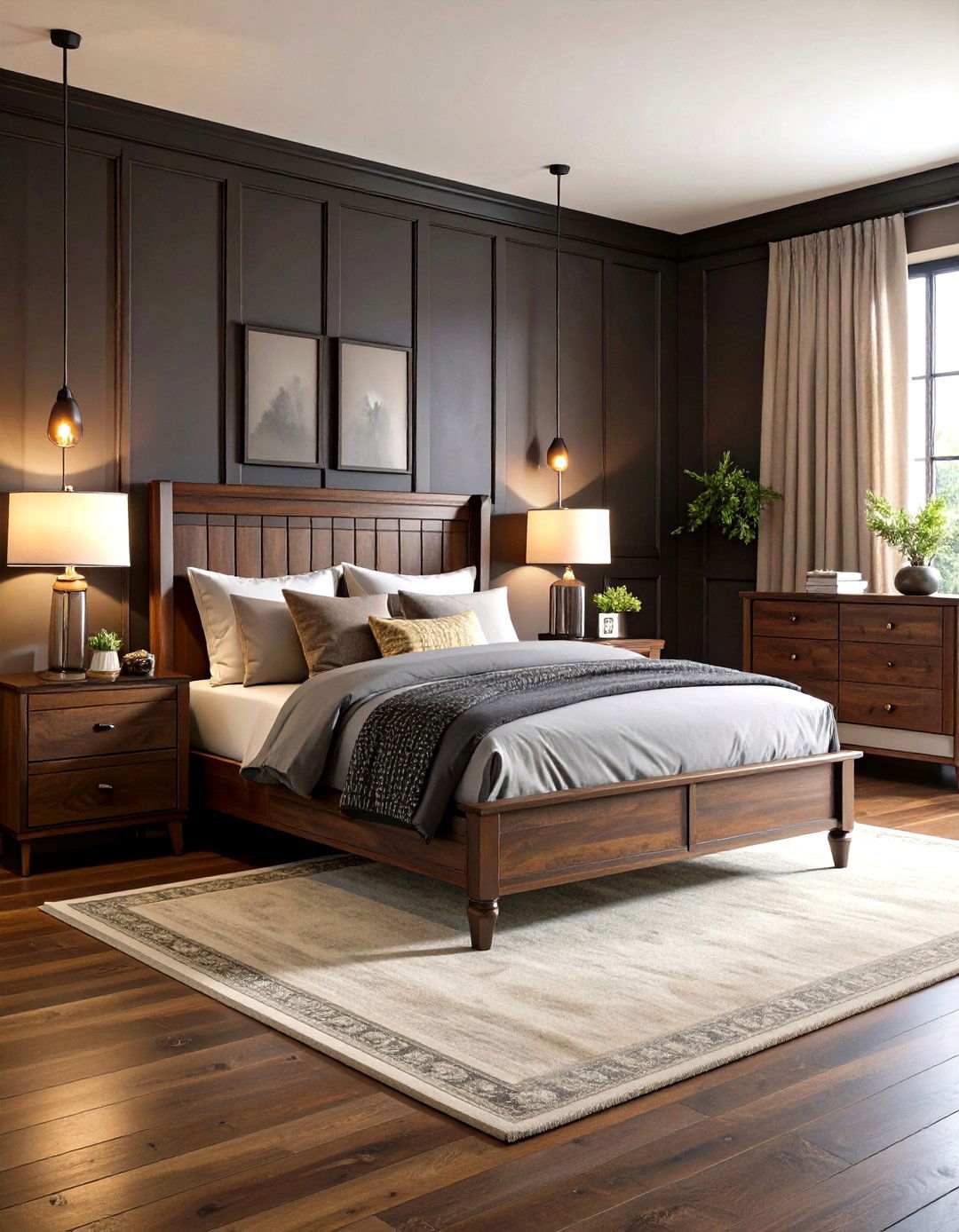

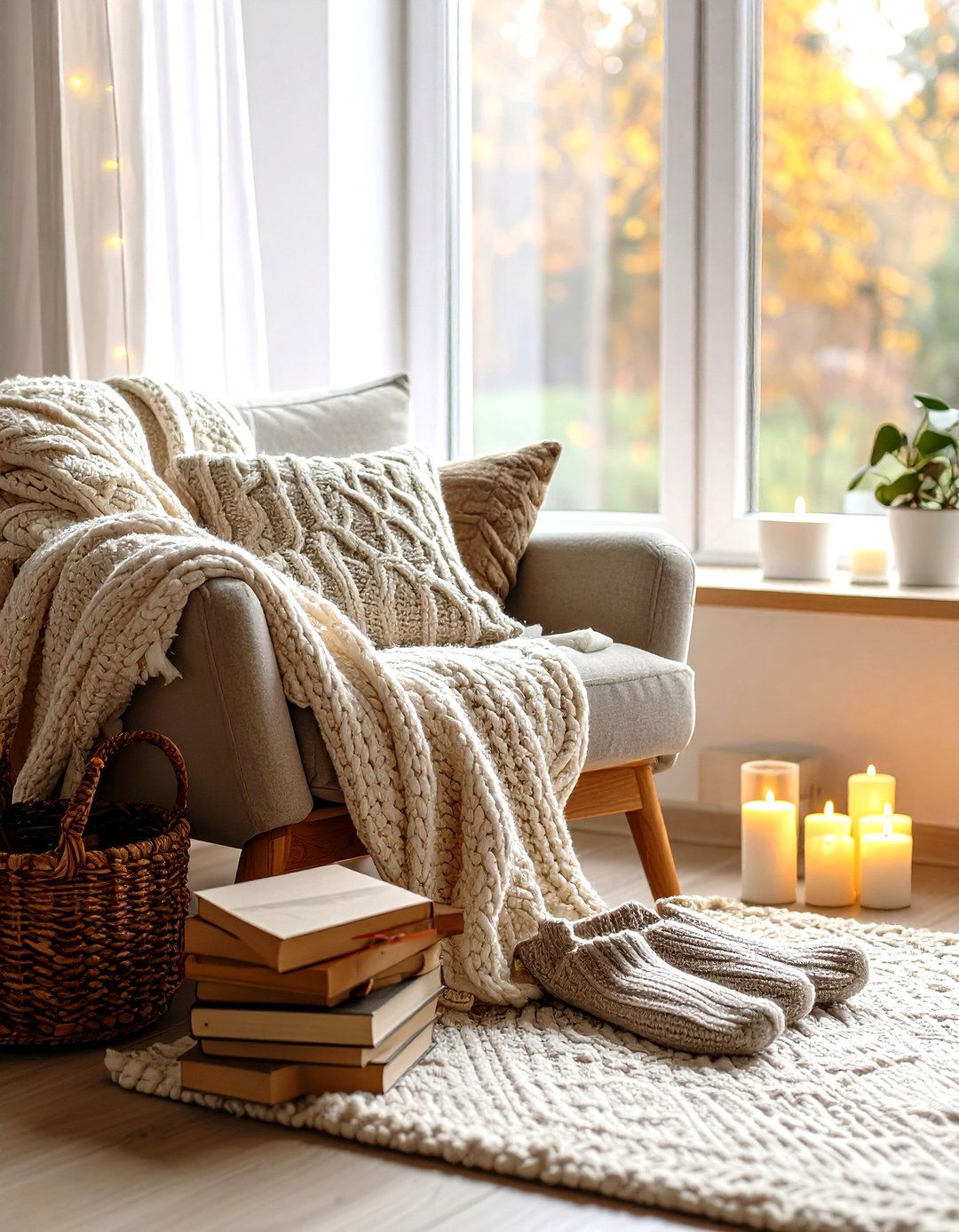
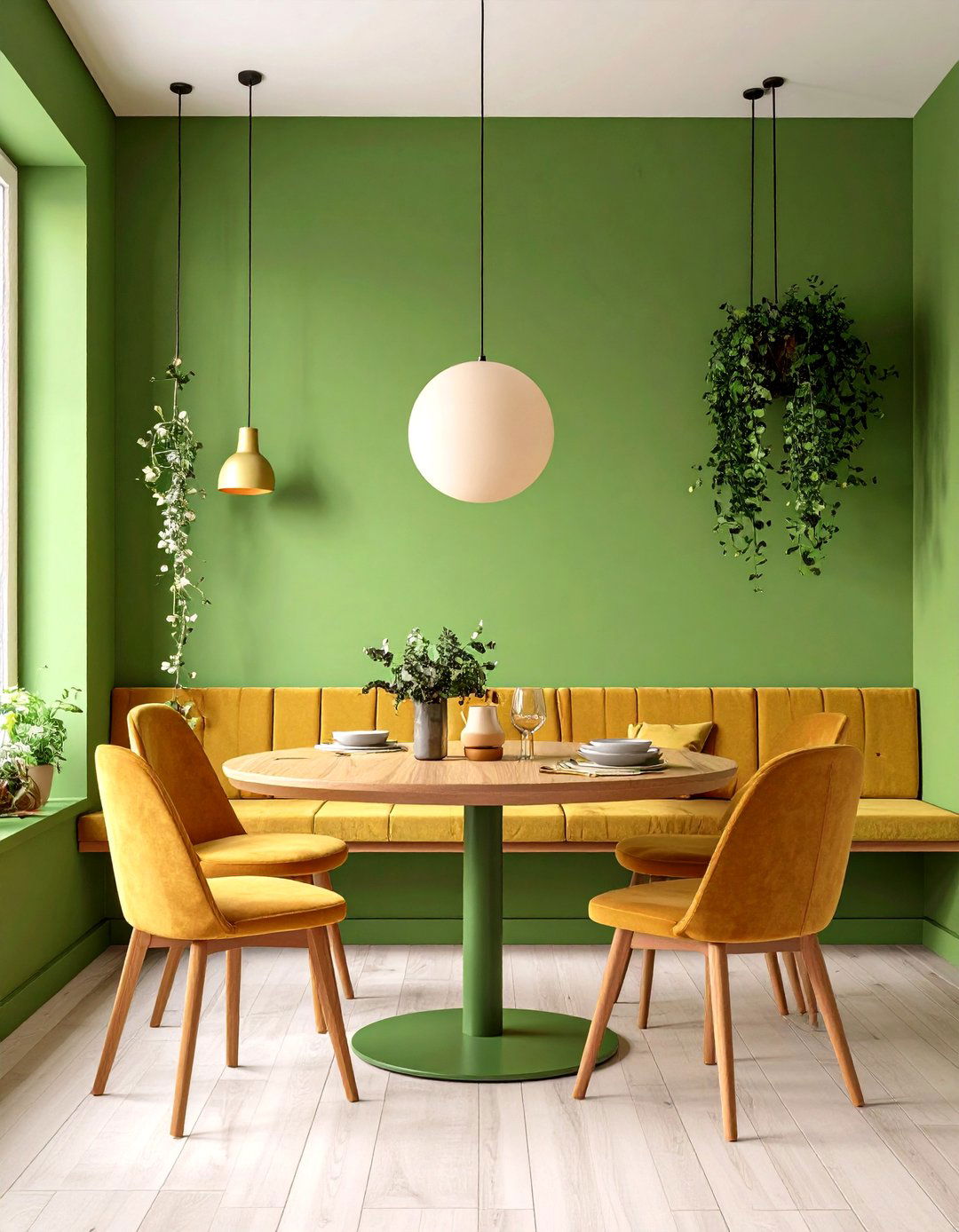

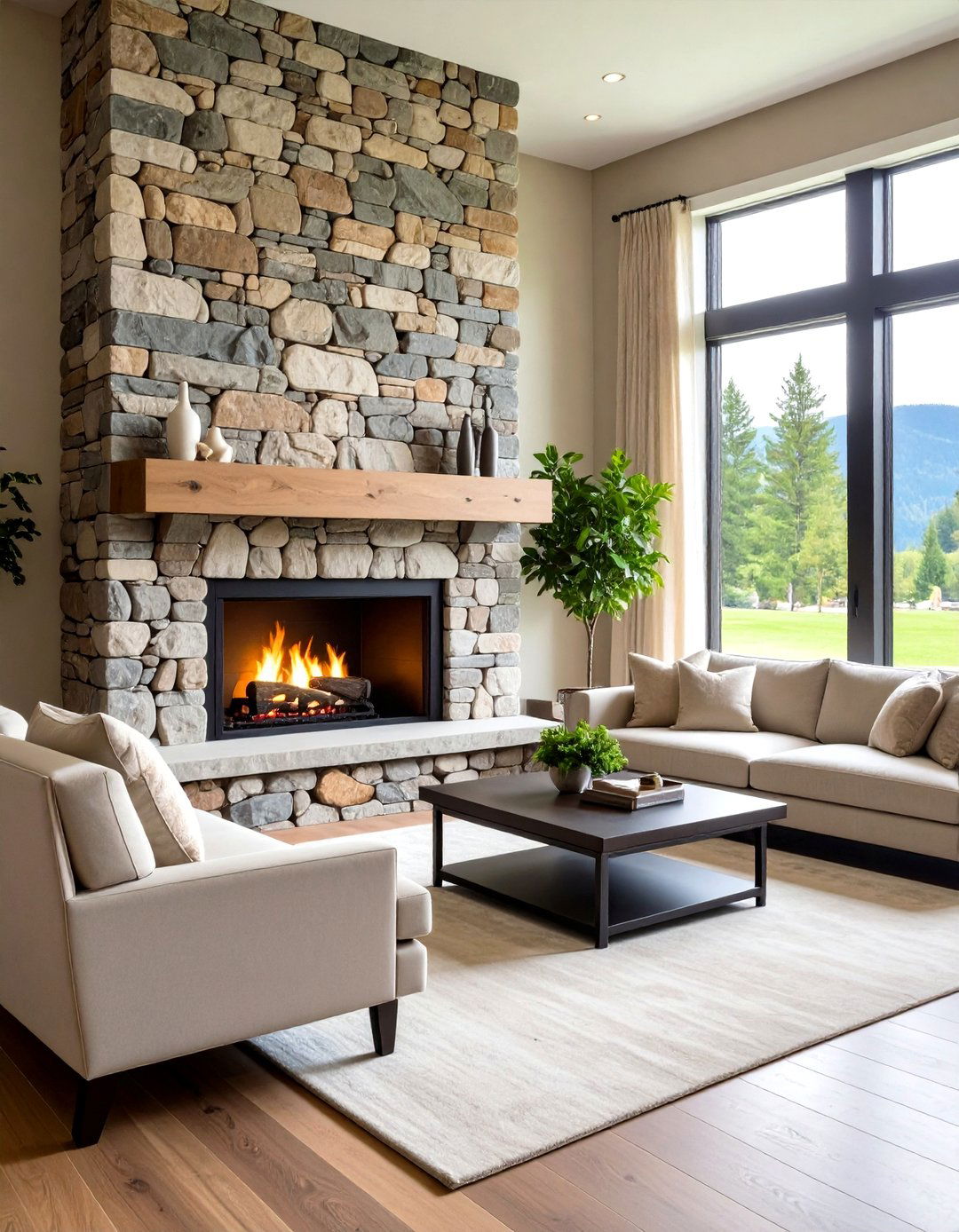

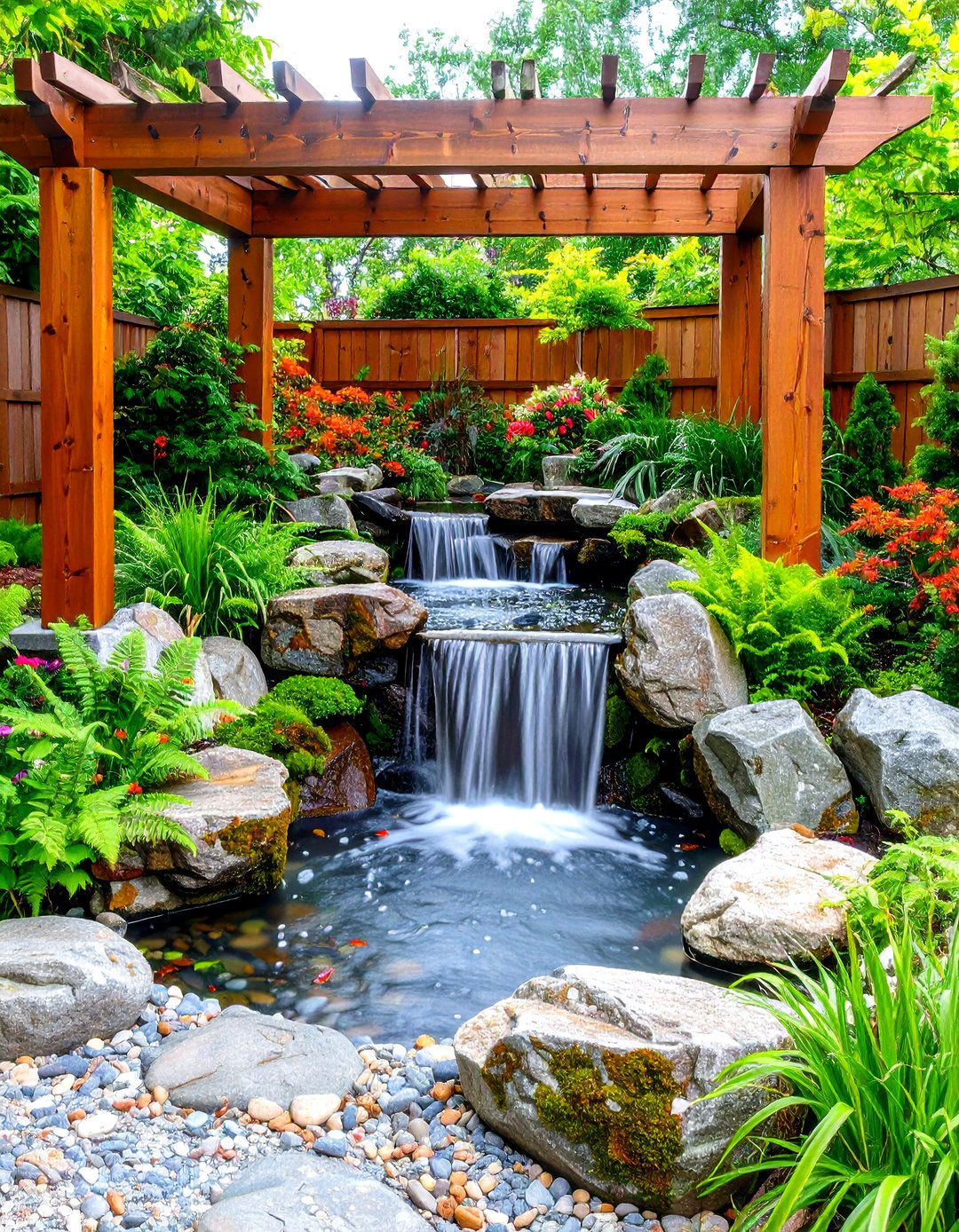
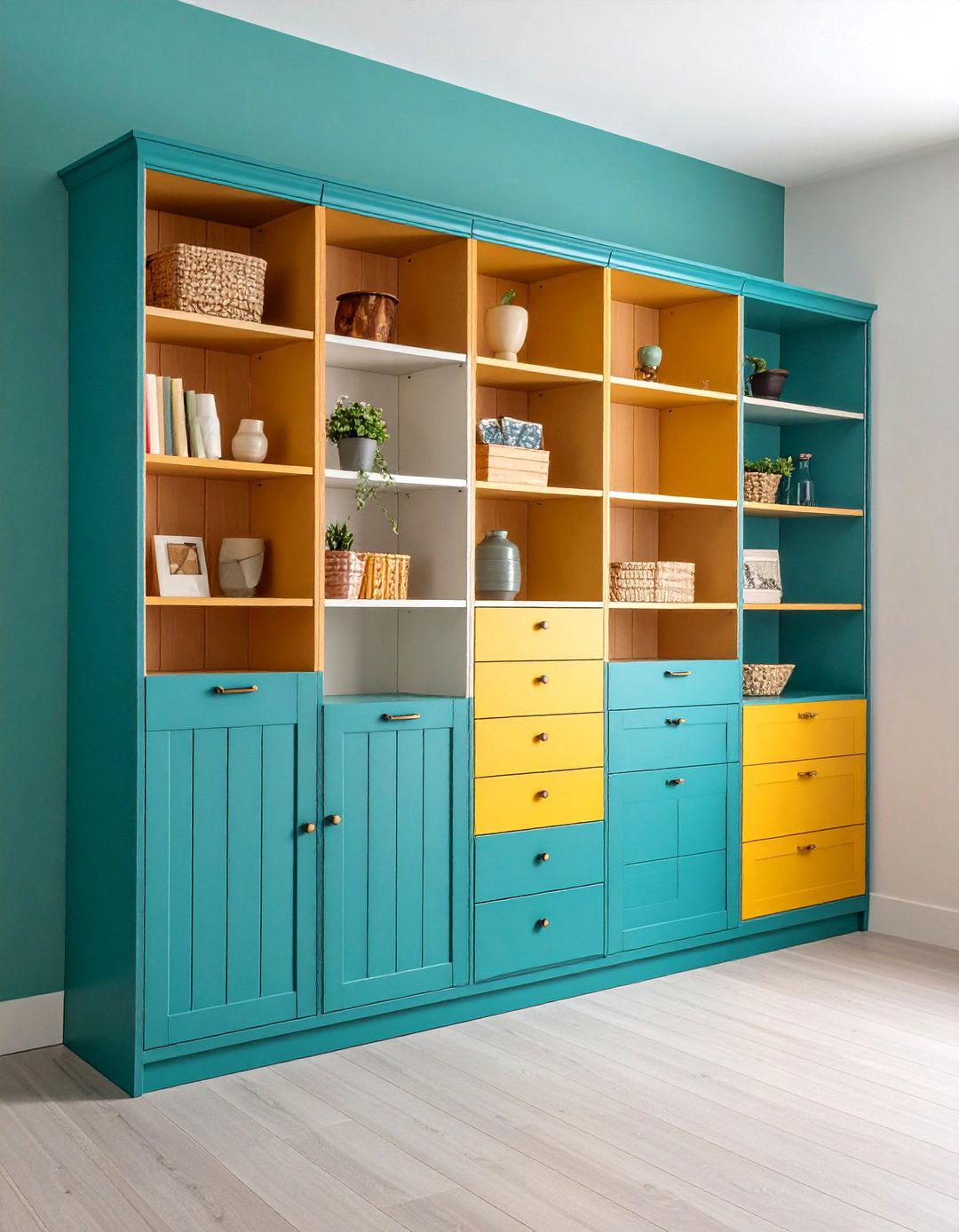
Leave a Reply